The next day, I woke up early, but kept dozing for a while longer. I felt the need to rest a bit more.
At some point, I did go down for breakfast, which was quite good, while the highlight was freshly squeezed orange juice – in large quantities.
After breakfast, luckily I asked the girl at the reception to check exactly where I needed to catch the "big taxi" (shared taxi) to the place called Moulay Idriss. It turned out to be much closer than what my guidebook said, just a few hundred metres from the hotel. I arrived at the "starting station," asked the people standing there, and they placed me in the back seat of a Mercedes where some women were already sitting, so there were four of us in the back, while the driver and two men were in the front.
Although it was a bit cramped, it was also pleasant. The woman sitting next to me spoke French, so we had a nice chat, at least as much as my knowledge of French allowed. They also offered me a piece of Moroccan “cornbread with herbs” (I think it was mint). It was very tasty and I gladly ate the piece they offered me.
I got out of the taxi right at the start of the road that leads up to the town of Moulay Idriss. From there, I had to walk for about 2–3 km in order to reach my actual destination, which this time was the archaeological site of Volubilis. The forecast for that day had predicted rain, while on the road from Meknes to Moulay Idriss (about 30 km), there was some drizzle and the road was completely wet. Still, when I got out of the taxi, maybe a drop or two fell, if that, and later it even cleared up quite a bit.
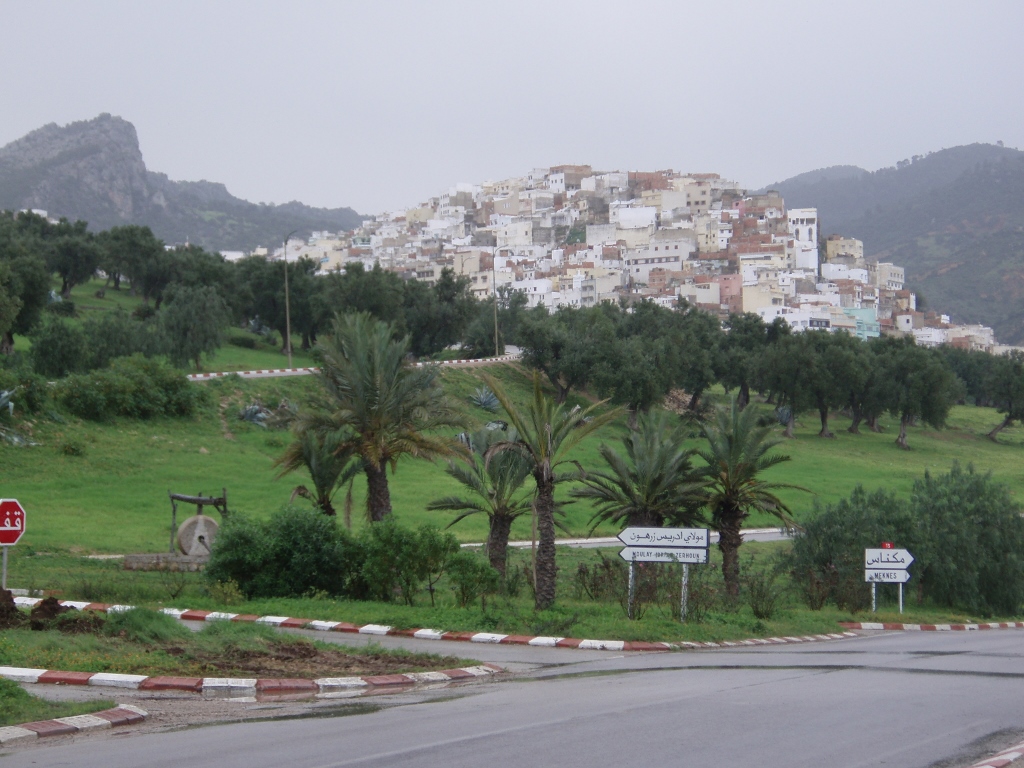 Town of Moulay Idriss near Meknes, a couple of kilometres from the Volubilis ruins
Town of Moulay Idriss near Meknes, a couple of kilometres from the Volubilis ruins
Moulay Idriss is a very important place for Morocco. The town is named after one of the most revered Muslim "saints," a descendant of the Prophet Muhammad and the founder of the first imperial dynasty in Morocco, and is therefore considered the founder of Morocco itself. Idris I came here after fleeing from Mecca at the end of the 8th century and after his death, he was buried here; his mausoleum and the surrounding complex are located in this town. For Moroccans, it is also a place of pilgrimage and access for non-Muslims was only allowed starting in 1912. At the time of my visit, non-Muslims were still not permitted to enter the town’s mosques, while until 2005, they weren’t even allowed to spend the night there. Access to the mausoleum of Idris I is still prohibited for non-Muslims.
I came here, however, to visit Volubilis. I’ll say more about the site itself later, but for now, I want to mention the walk, because even though I walked alongside the road, it remains a very fond memory.
I found the entire area to be very beautiful — full of olive groves, along with palm trees and agaves.
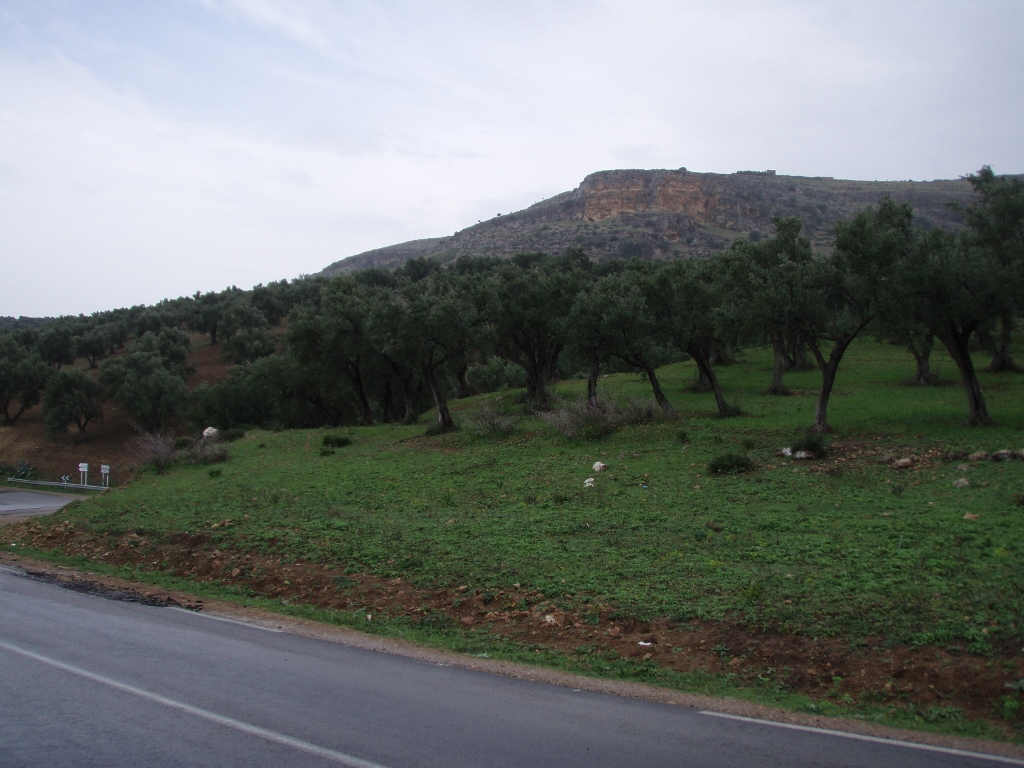 Between Moulay Idriss and Volubilis, a detail
Between Moulay Idriss and Volubilis, a detail
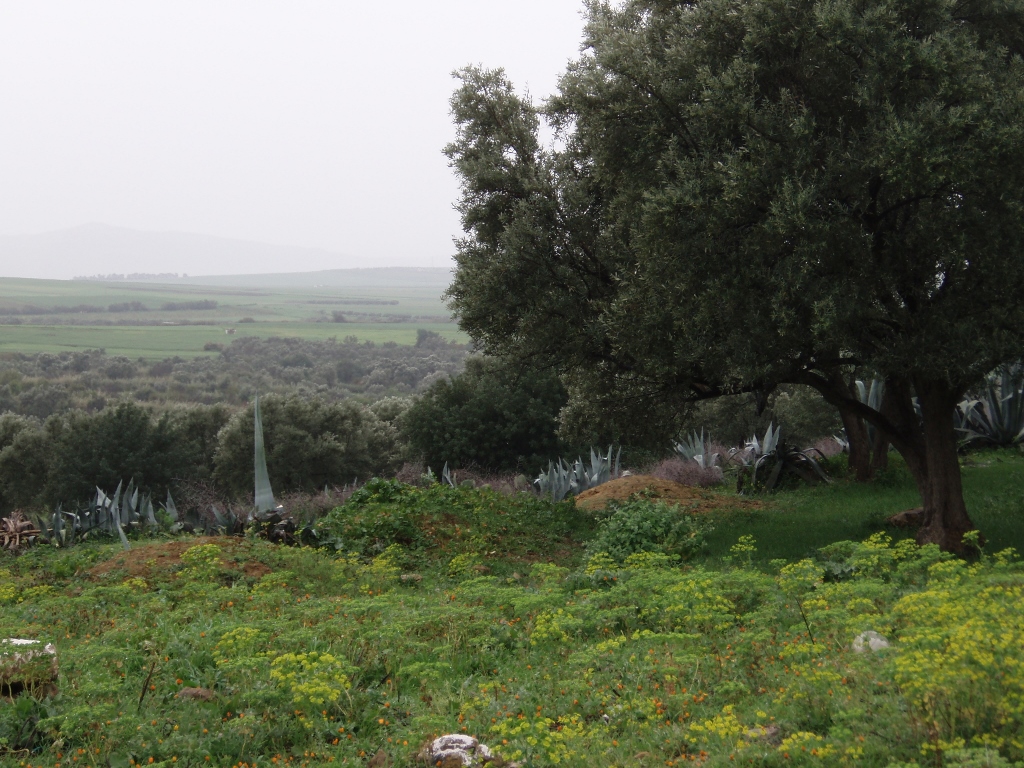 Between Moulay Idriss and Volubilis, a detail
Between Moulay Idriss and Volubilis, a detail
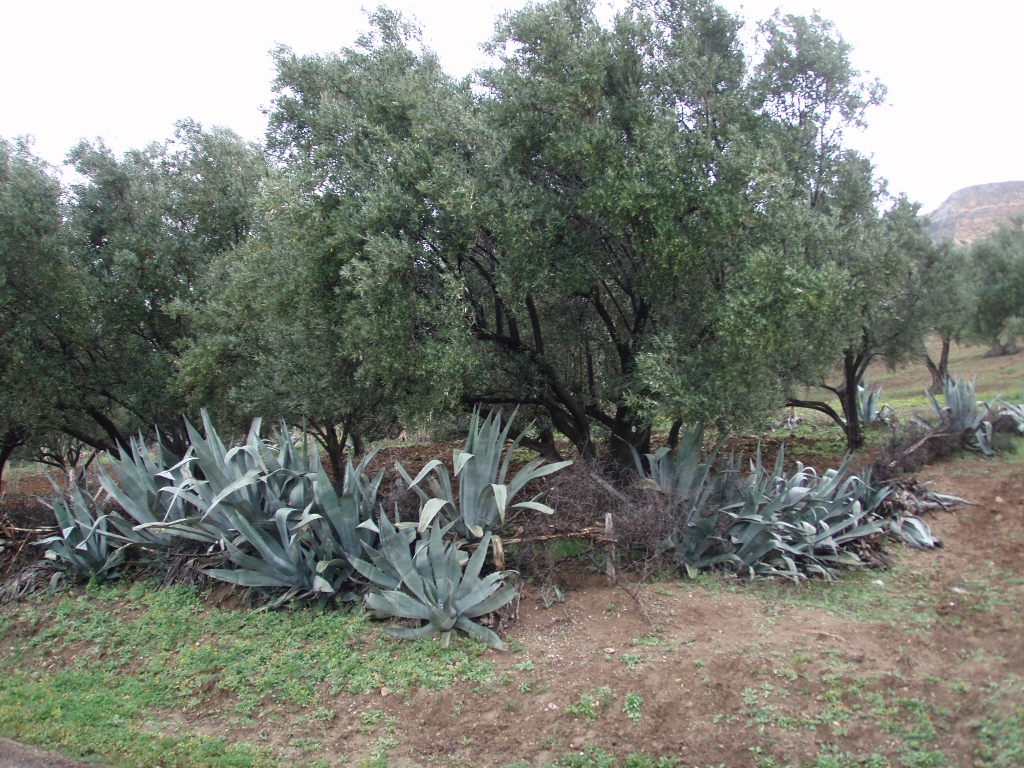 Between Moulay Idriss and Volubilis, a detail
Between Moulay Idriss and Volubilis, a detail
At one point, I saw an area where a flash flood had clearly passed through. That year, there had been a lot of rainfall in this part of Morocco. About a month before my trip, in Meknes, the very city where I was staying, heavy rains caused the collapse of a minaret at a mosque, and several dozen people were killed in the incident.
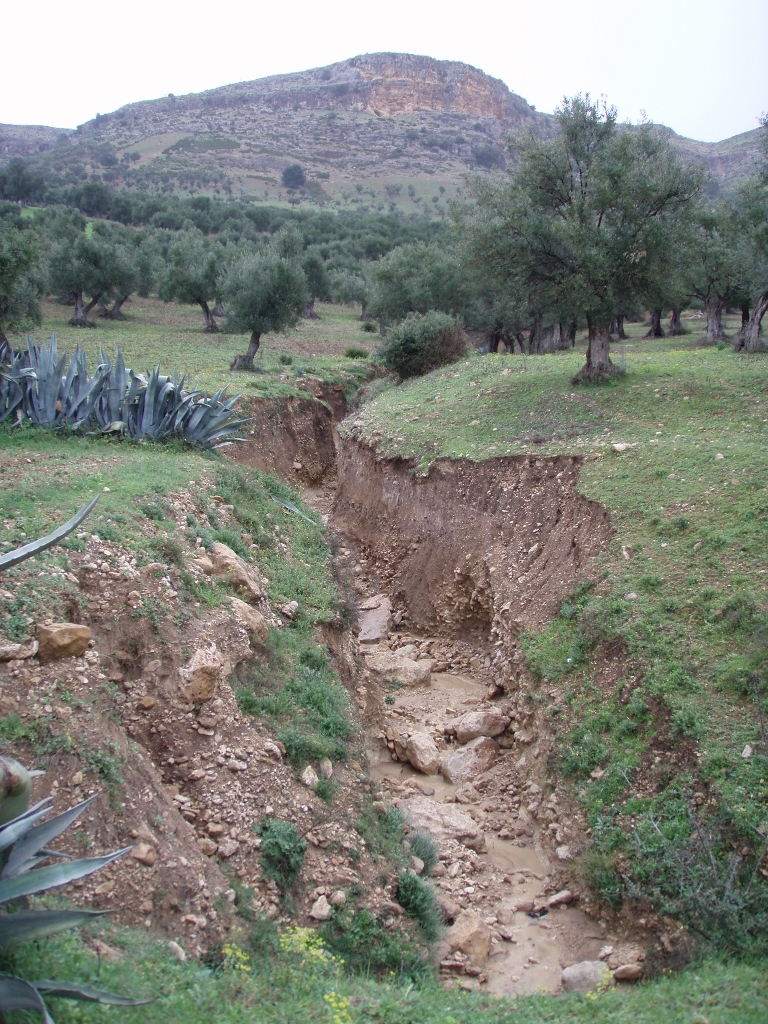 Between Moulay Idriss and Volubilis, a detail
Between Moulay Idriss and Volubilis, a detail
From one spot, I also had a partial view of Moulay Idriss again and you can also clearly see the path along the road where I had walked.
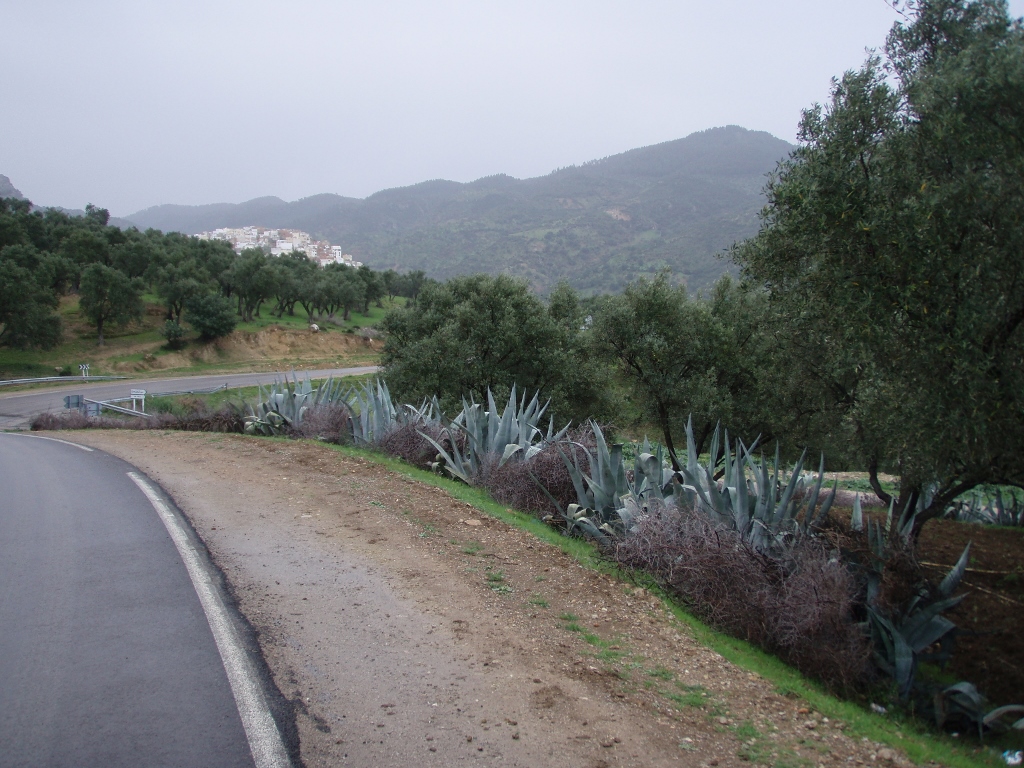 Between Moulay Idriss and Volubilis, a detail
Between Moulay Idriss and Volubilis, a detail
What made this walk especially memorable for me were the encounters I had along the way.
At one point, I saw an older man herding sheep and goats. Since I had already learned the usual greeting, I said to him: Salam alaykum and he replied with: ”Wa alaykumu s-salam.
And that was it, but it reminded me of other similar moments in my life. Back in the day when I used to go hiking, mostly in the mountains of Montenegro, but also in Serbia, I realised that people tend to greet each other very politely when passing in the mountains. There's no need to know one another, or even to stop and talk. You simply acknowledge the other human being you’ve come across in a respectful way and then each continues on their own path.
The same thing happened to me in Quirigua, Guatemala (see: https://www.svudapodji.com/en/mesoamerica-2008-29/). I mean the way strangers would greet each other when they crossed paths. My conclusion is that people are clearly just as polite all over the world, but it also seems necessary for them to live in the mountains or in villages. Of course, I understand that it would be pretty complicated to greet everyone you pass in a big city, but... it does seem like there's a general trend of people greeting each other less and less, even their neighbours.
Still, I have to say, I really liked that moment when I greeted the shepherd and he greeted me back.
There was also a man carrying some small oil cans who passed by, and we “chatted” a little (a lot of people speak French), and he pointed me in the direction of Volubilis. From that spot, the ruins of the city could already be seen in the distance.
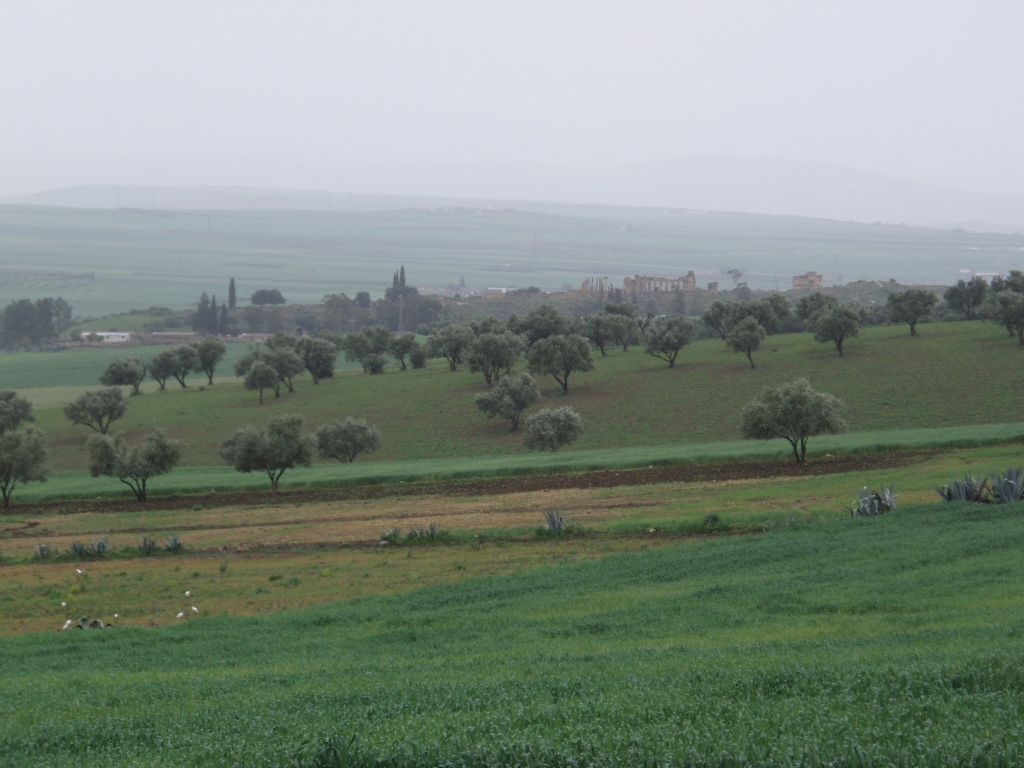 Between Moulay Idriss and Volubilis, a detail
Between Moulay Idriss and Volubilis, a detail
As seen in the photos, there was no sunshine, but everything still looked beautifully green. At one point, I felt incredibly happy and perfectly fulfilled. Even though it was a very pleasant feeling, it also puzzled me a little. It’s not like I usually react that way to a gray sky, green fields, olive trees, or the ruins of an ancient Roman city. I was genuinely surprised by how intensely happy and fulfilled I felt in that moment.
I started wondering where that feeling was coming from and why I felt so happy. Even though I was walking, I let my mind relax and allowed all kinds of associations to come up. And then... a flash: “Because no one in the world knows where I am” (and no one can call or contact me). I smiled a bit bitterly. That thought reflected the chaos and stress I had been going through before coming to Morocco. In slightly different forms and varying intensities, that would continue over the next ten years. But that’s life. Sometimes it’s good and gentle with us, and sometimes it’s not.
In any case, after a while, I reached a side road that branched off from the main one and led to the archaeological site, so I followed it.
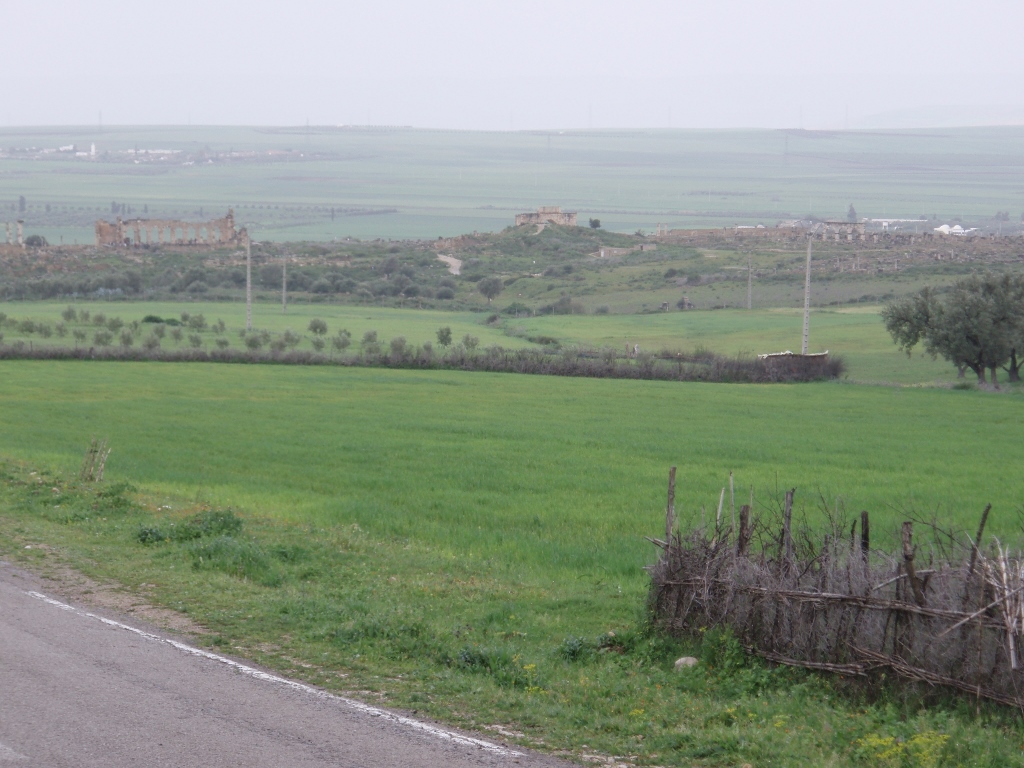 Approaching the Archaeological Site of Volubilis
Approaching the Archaeological Site of Volubilis
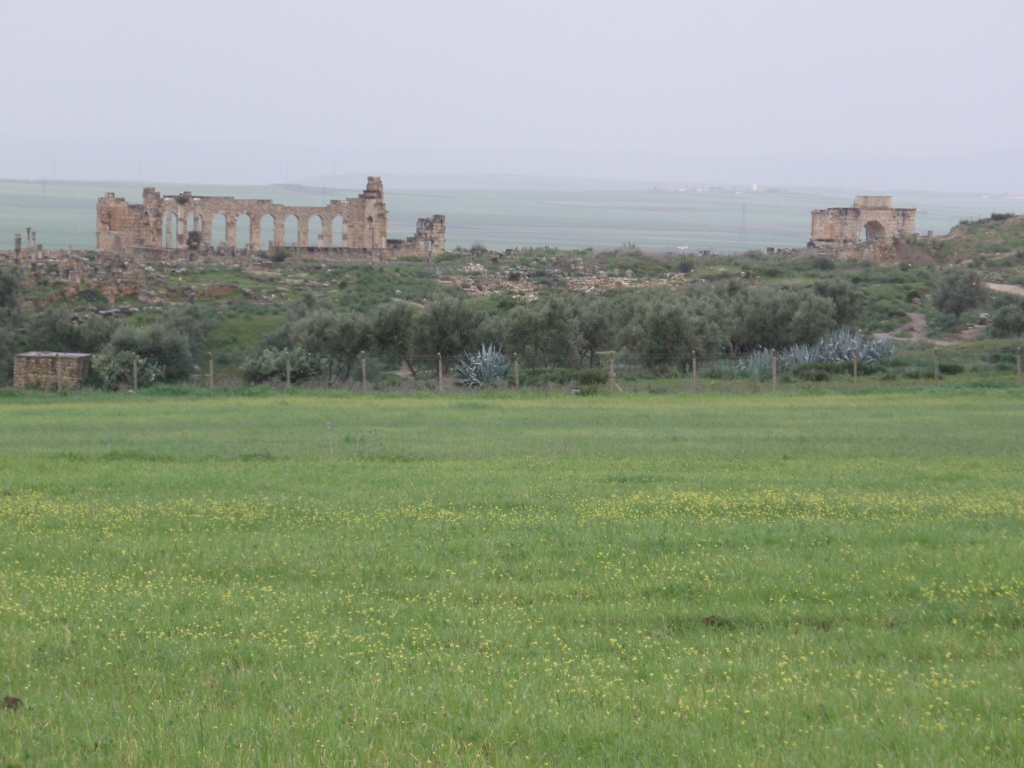 Approaching the Archaeological Site of Volubilis
Approaching the Archaeological Site of Volubilis
The city of Volubilis was founded in the 3rd century BCE and over time (from around 40 CE) became a very important outpost of the Roman Empire, with many beautiful buildings constructed there. Most of the structures were built during the 2nd and 3rd centuries CE. A significant portion of them has survived to this day and is now surrounded by fertile fields. For a brief period, this was also the location of the capital of the previously mentioned Idris I, the founder of the Idrisid dynasty (which ruled Morocco from 788 to 974).
The site covers an area of about 40 hectares, but it’s important to note that it is relatively isolated and remained uninhabited for about a thousand years, which means a wealth of artefacts have been found here. In 2010, when I visited, people were saying that not even half of it had been excavated yet. At the same time, this is the largest and best-preserved Roman archaeological site in Morocco.
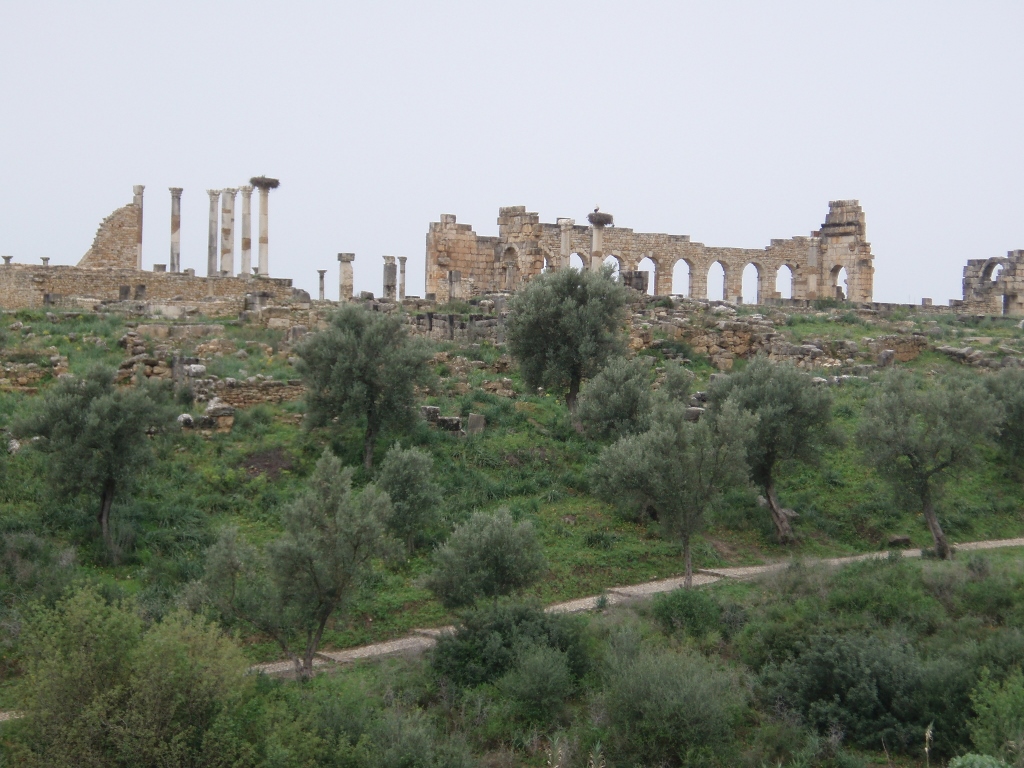 View at the central section of Volubilis and the remains of the Basilica and the Capitoline Temple
View at the central section of Volubilis and the remains of the Basilica and the Capitoline Temple
Volubilis is considered especially significant because it illustrates urban development and the strong Roman influence at the edges of the empire, which led to a blending of Roman and indigenous cultures. However, within the site, evidence of human presence can be seen from prehistoric times through to the Islamic period. What stands out the most are the mosaics, as well as marble and bronze sculptures.
Because of its overall importance, Volubilis has been inscribed on the UNESCO World Heritage List. I had quite a smooth arrival here and spent a few hours exploring the site.
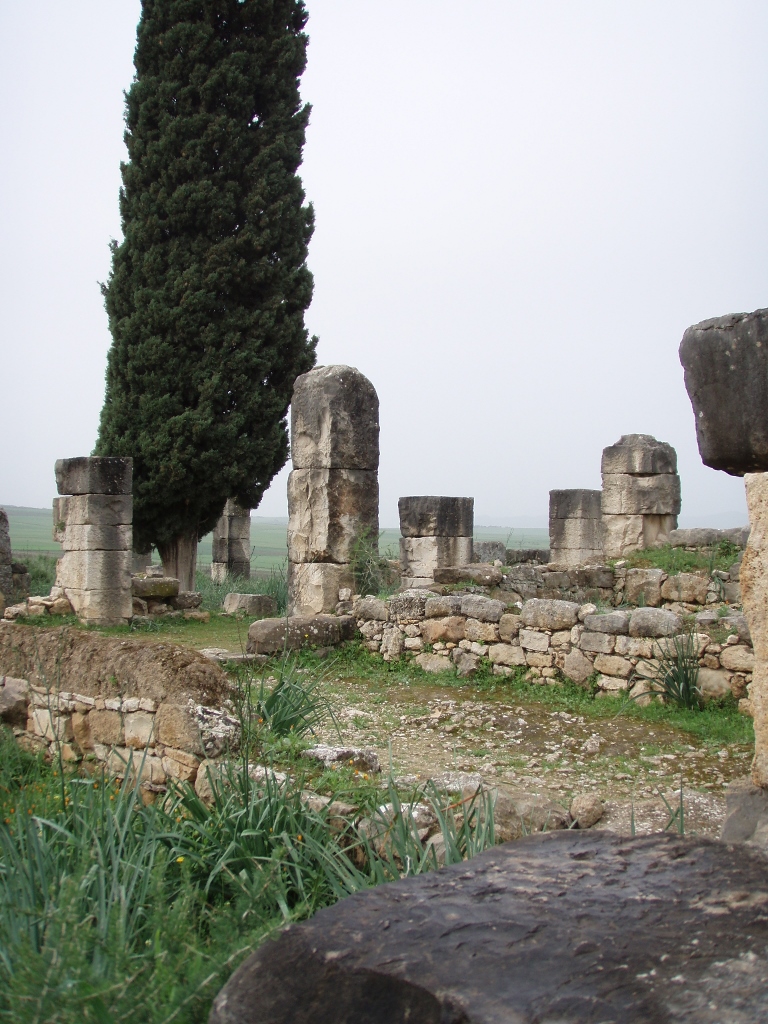 Volubilis, a detail
Volubilis, a detail
I began my tour from the southern part of the site, where the entrance is located. There are remains of a residential quarter there, with the olive presses standing out as particularly significant features.
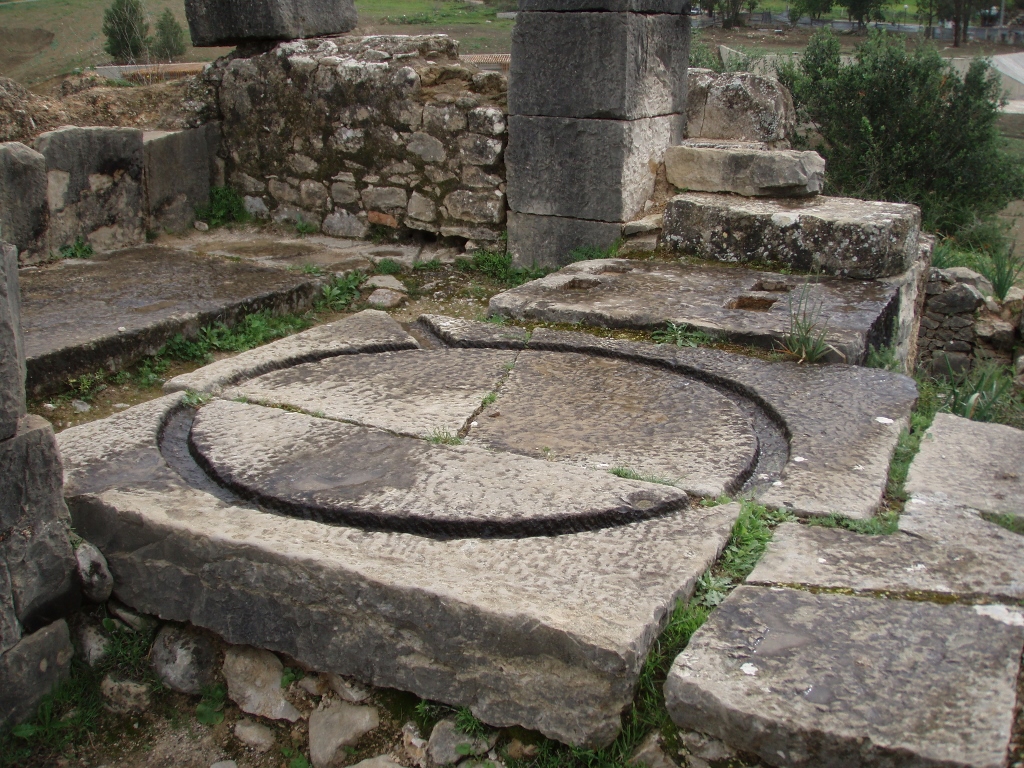 Volubilis, a detail
Volubilis, a detail
The main route for exploring the site leads northwards and along the way, you can see some very beautiful details, such as one single capital.
 Volubilis, a detail
Volubilis, a detail
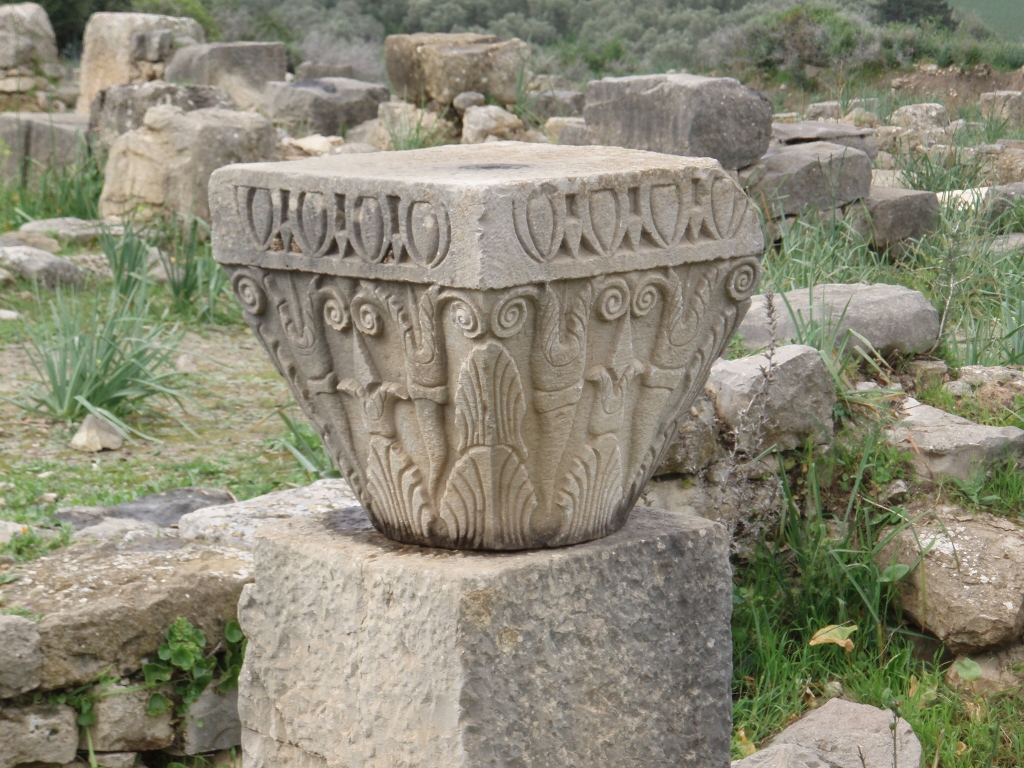 Volubilis, a detail
Volubilis, a detail
One of the most important buildings in this area is the House of Orpheus, named after a mosaic depicting the mythological character, although mosaics can be seen in several places within the remains of the house.
 Volubilis, a detail
Volubilis, a detail
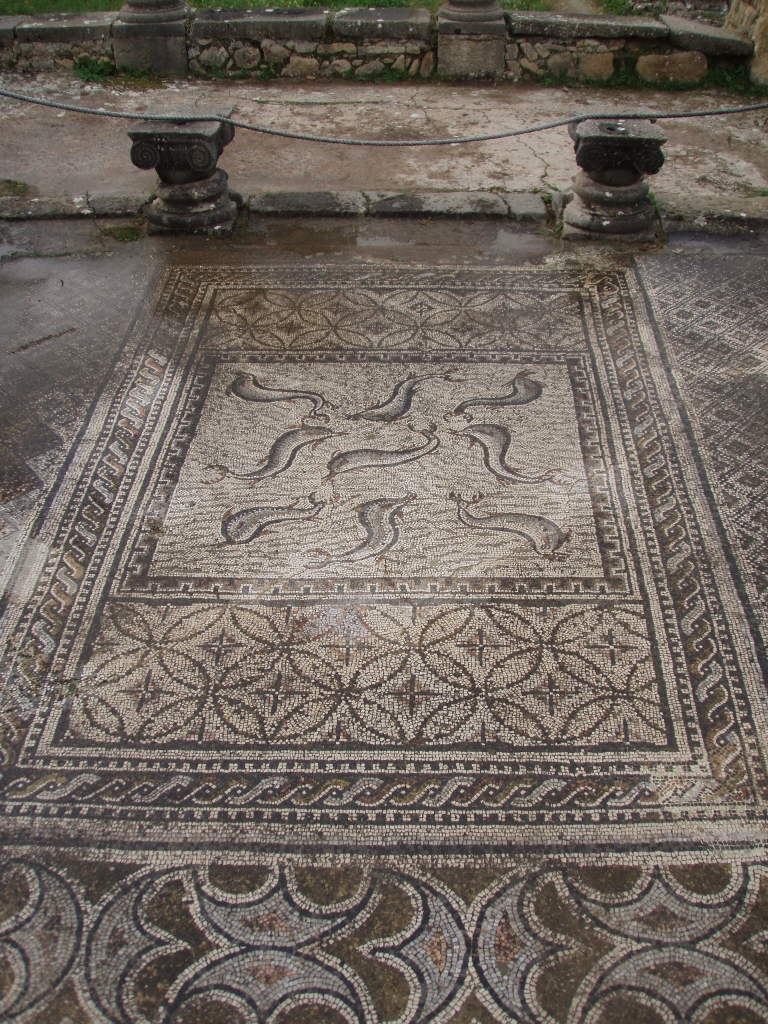 Volubilis, a detail
Volubilis, a detail
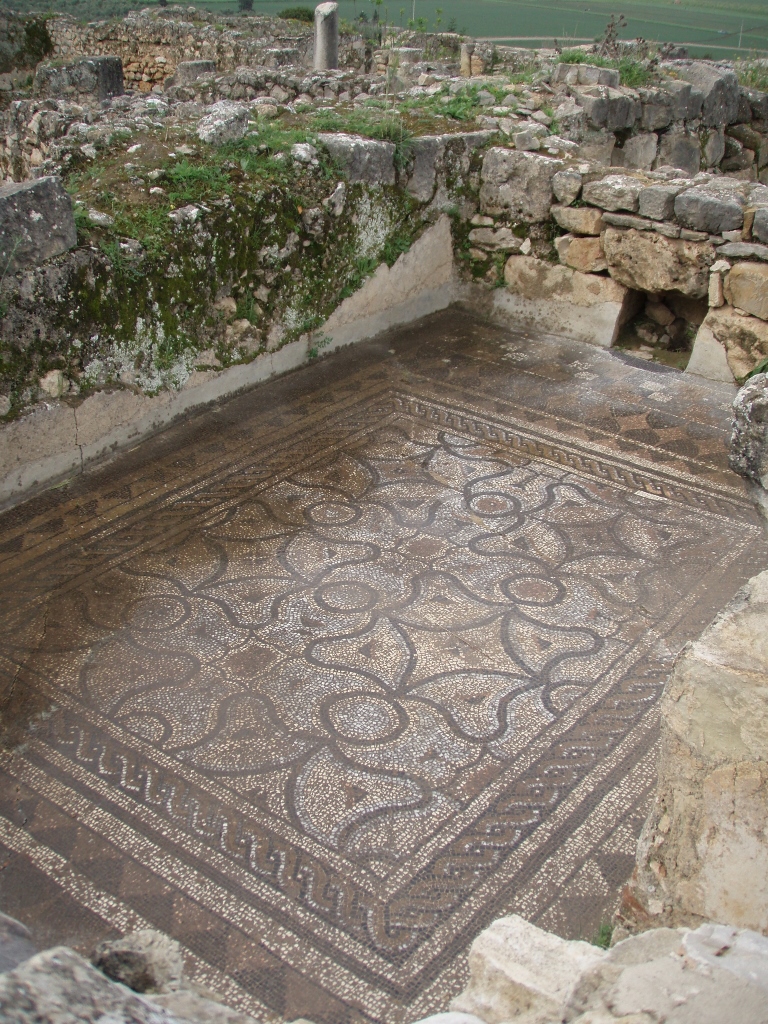 Volubilis, a detail
Volubilis, a detail
I found the bath in the House of Orpheus particularly interesting. The floor has visible indentations, while water used to flow down the walls through carved channels.
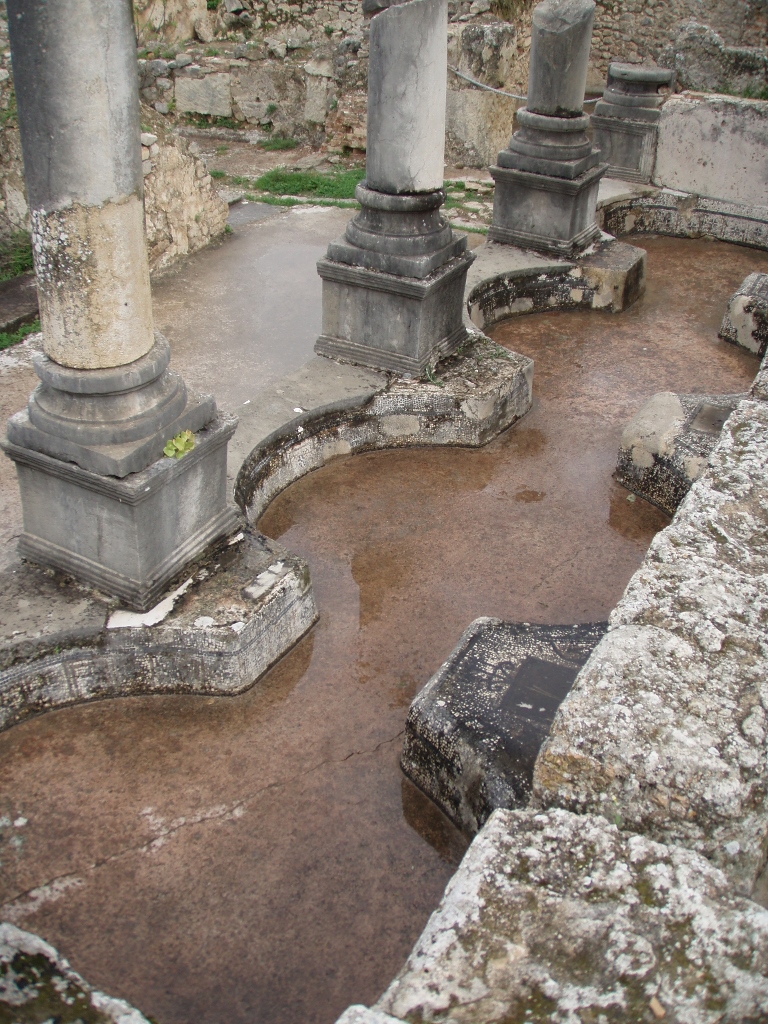 Volubilis, a detail
Volubilis, a detail
At the back of this clearly lavish house, which must have belonged to one of the wealthier residents of the city, there are two more mosaics, one of which depicts Orpheus and it is this mosaic that gave the entire building its name.
 Volubilis, a detail
Volubilis, a detail
Although from an artistic standpoint the main mosaic in the House of Orpheus has certain flaws, that in no way diminishes its beauty.
 Volubilis, a detail
Volubilis, a detail
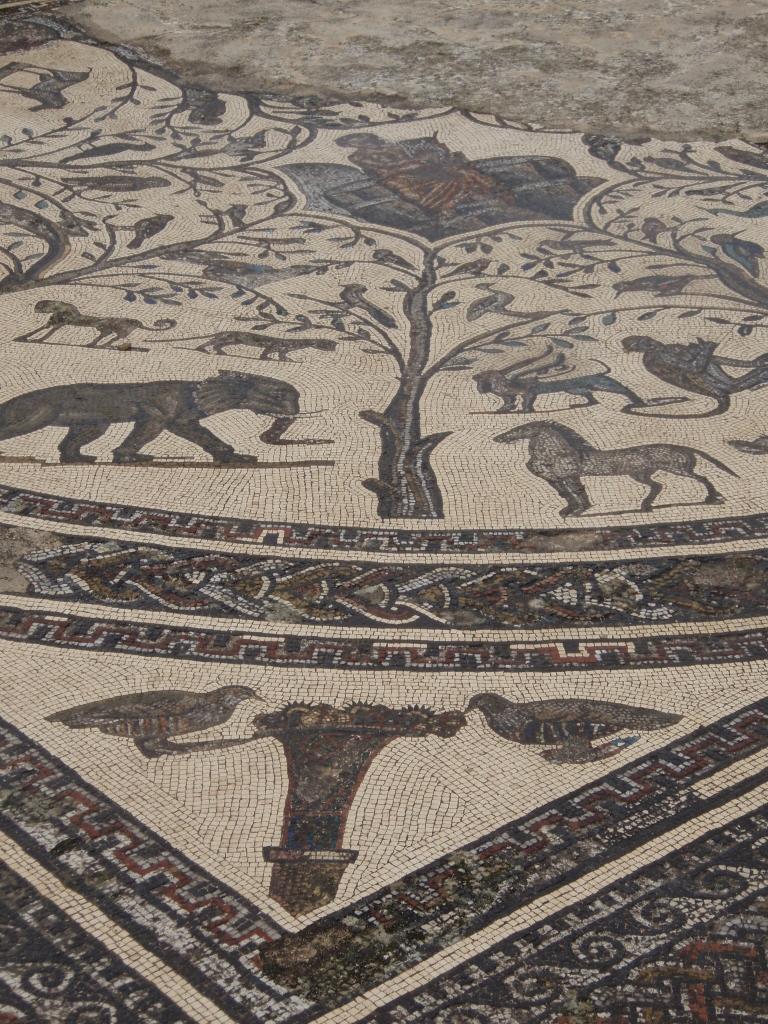 Volubilis, a detail
Volubilis, a detail
Next to this section, there is another room with a floor mosaic.
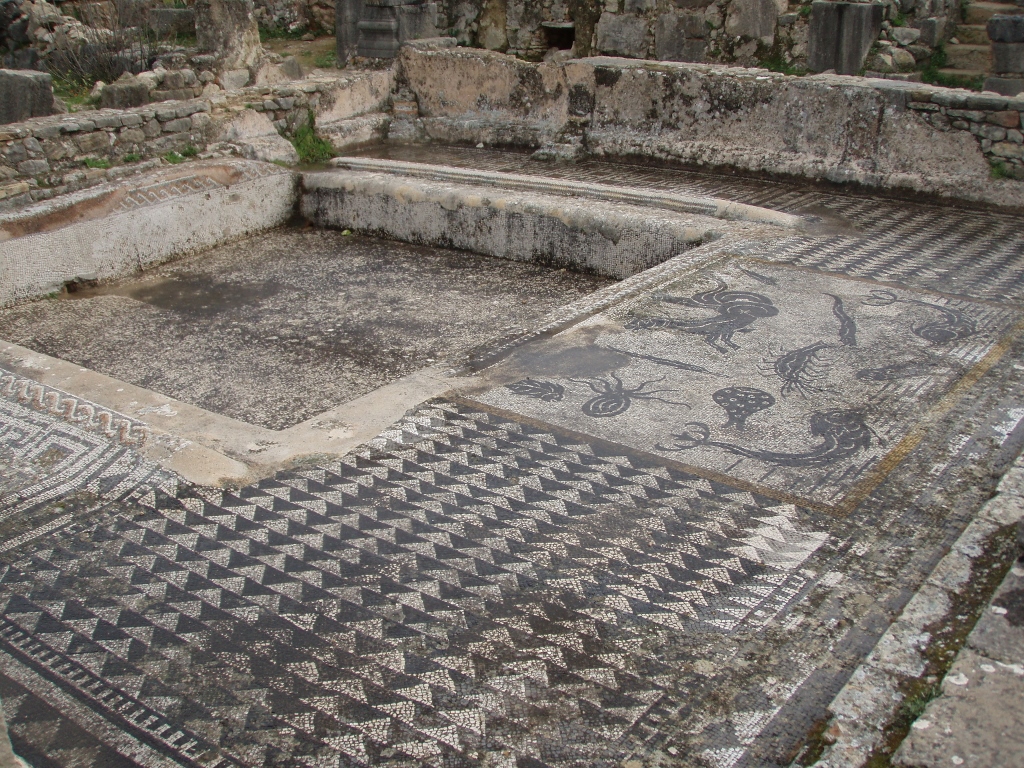 Volubilis, a detail
Volubilis, a detail
There is also another well-known mosaic from this house depicting Amphitrite, the ancient Greek goddess of the sea, riding in a chariot drawn by sea creatures.

From here, I continued exploring the site and nearby are the remains of the Thermal Baths of Gallienus. Directly across from them is a restored olive press.
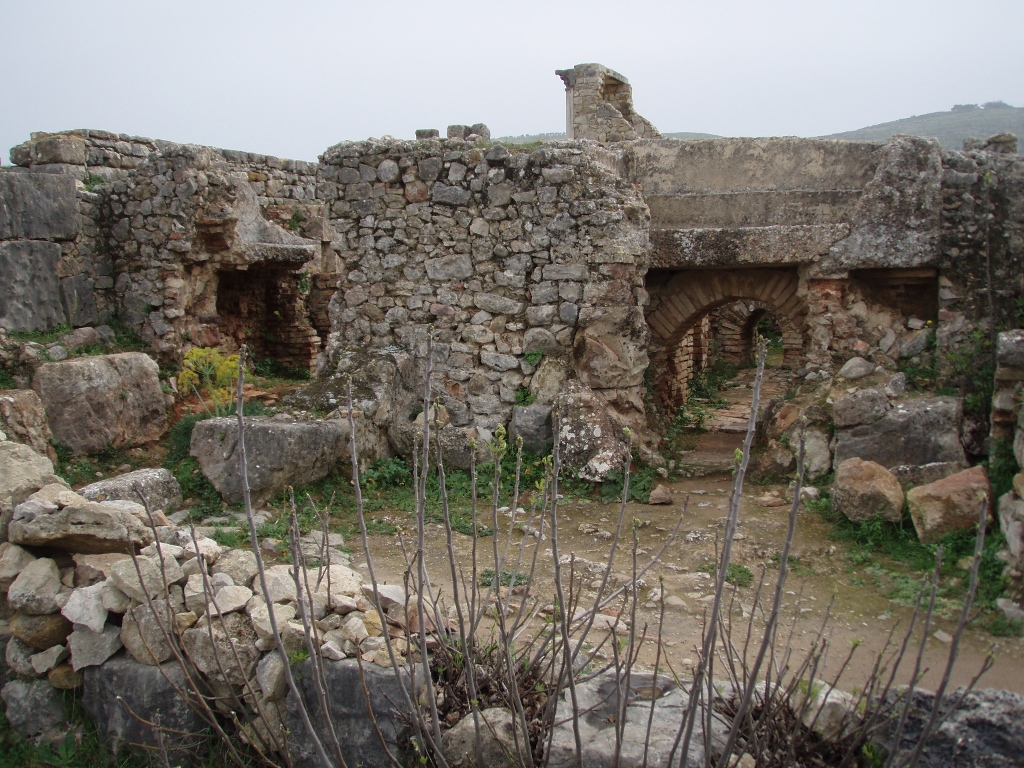 Volubilis, a detail
Volubilis, a detail
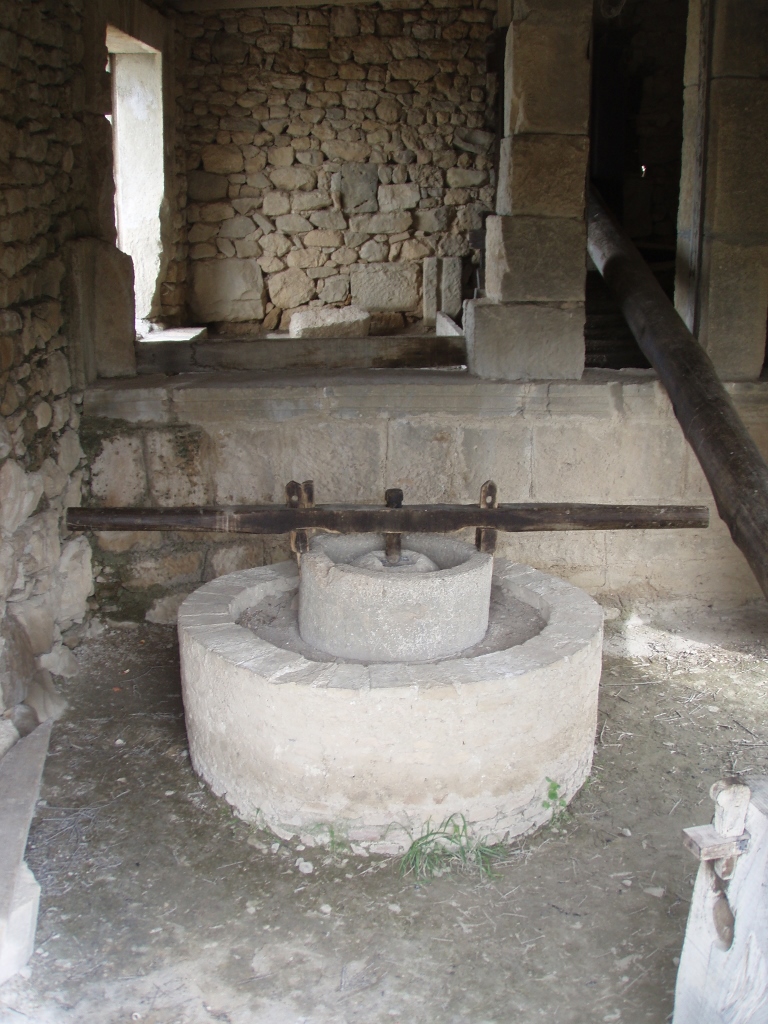 Volubilis, a detail
Volubilis, a detail
Then I reached the part of the city where the Forum is located and where two public buildings stand out in particular. One is the Capitoline Temple (named after one of the hills of Rome), built in 218 CE, while the other is the Basilica, also from the early 3rd century CE. Since these buildings were constructed on the foundations of earlier structures, it’s actually unknown what existed here before the beginning of the 3rd century.
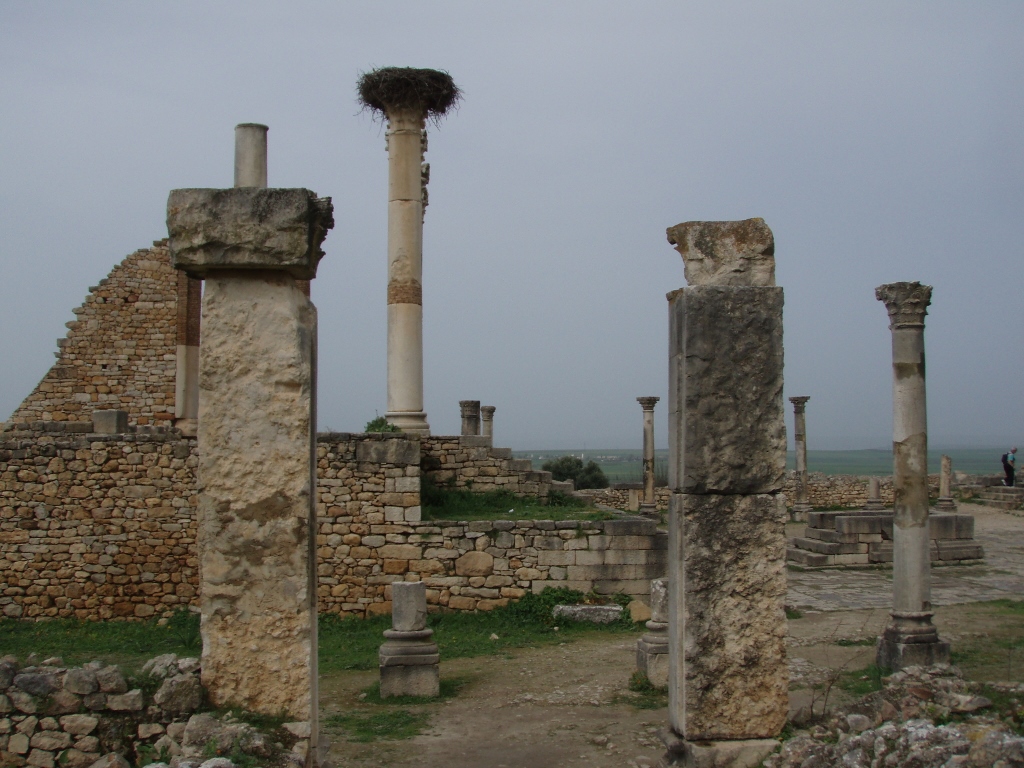 Volubilis, a detail
Volubilis, a detail
 Volubilis, a detail
Volubilis, a detail
In order to get a better impression of the Capitoline Temple, it's necessary for the visitor to step back a bit and then look towards the remains of the temple dedicated to the Roman trinity – Jupiter, Juno and Minerva.
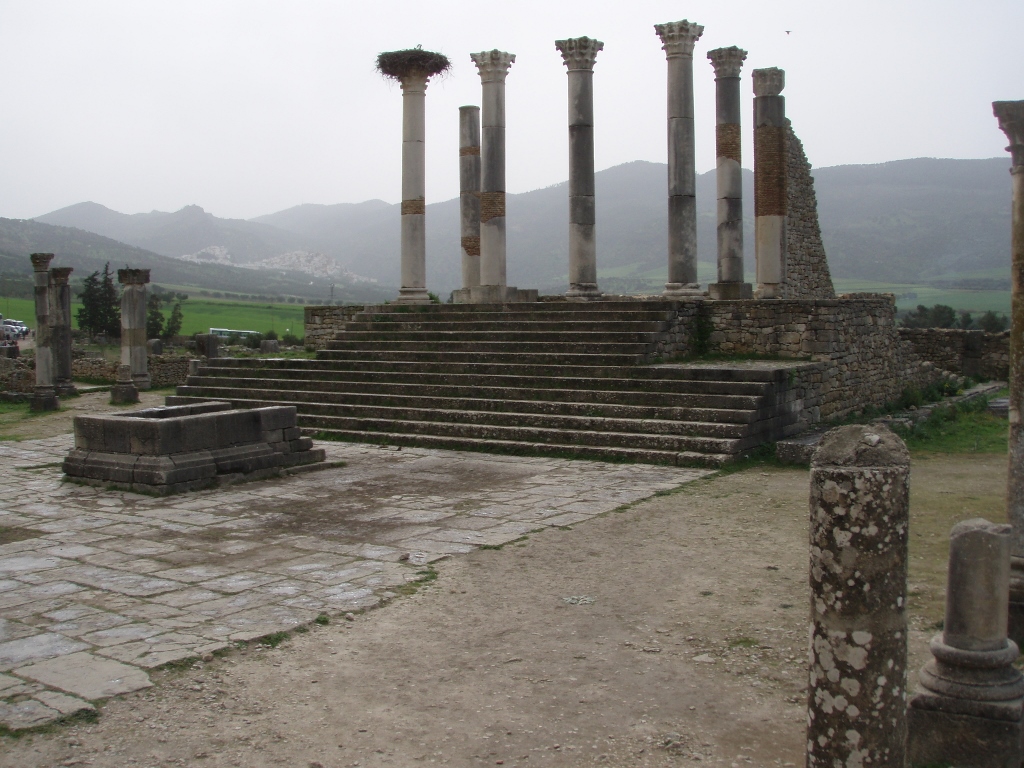 Volubilis, a detail
Volubilis, a detail
These two buildings were separated by a courtyard, while in front of the temple, there was an altar, the remains of which are still visible today. From there, 13 steps lead up to the temple with Corinthian columns.
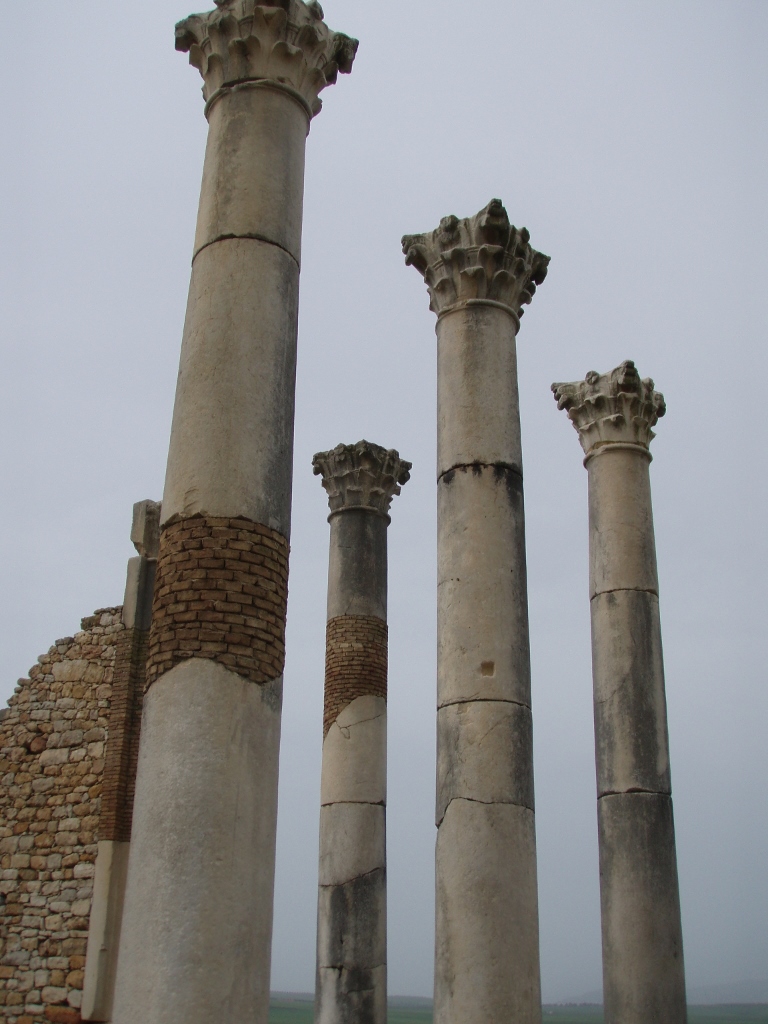 Volubilis, a detail
Volubilis, a detail
I climbed up here, but I also found it interesting to capture the surroundings – both the closer area with the remains of other buildings, as well as the distant view with the green fields.
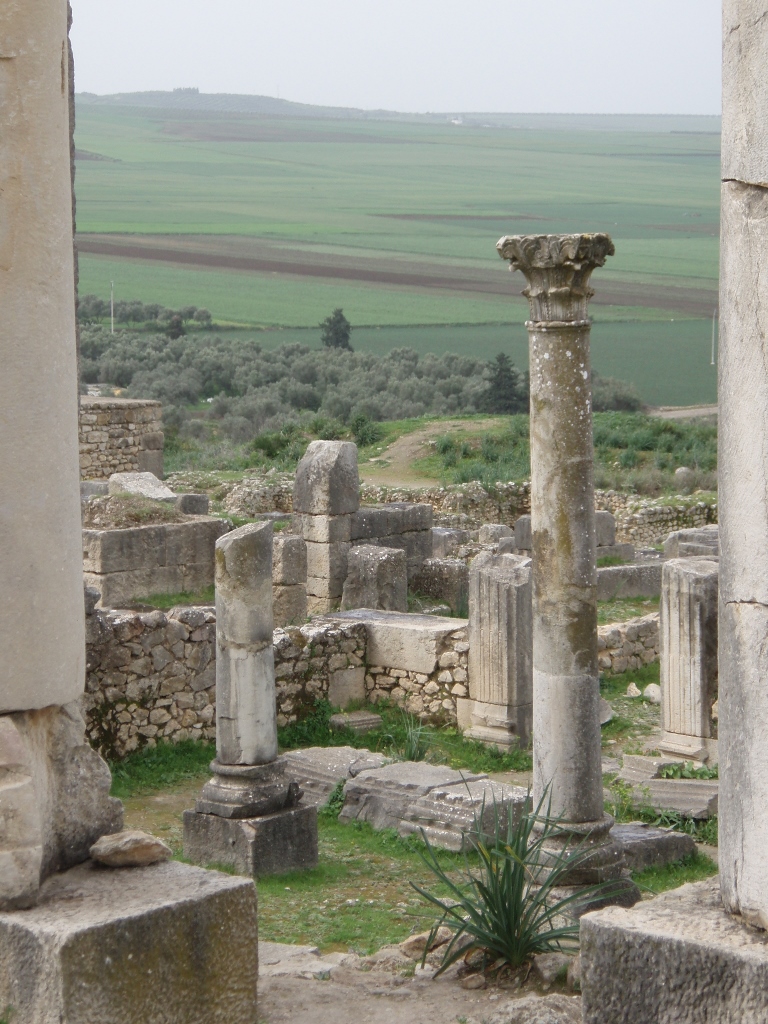 Volubilis, a detail
Volubilis, a detail
From the gentle elevation of the Capitoline Temple, you can also get a good view of the Basilica, as well as a large portion of the site.
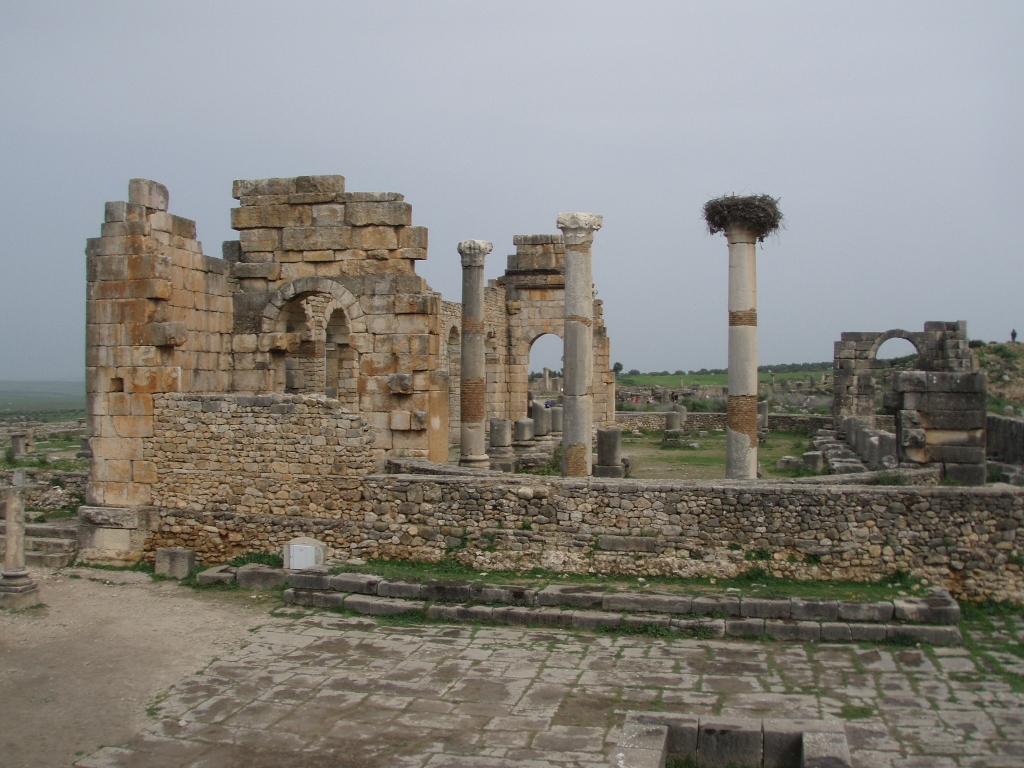 Volubilis, a detail
Volubilis, a detail
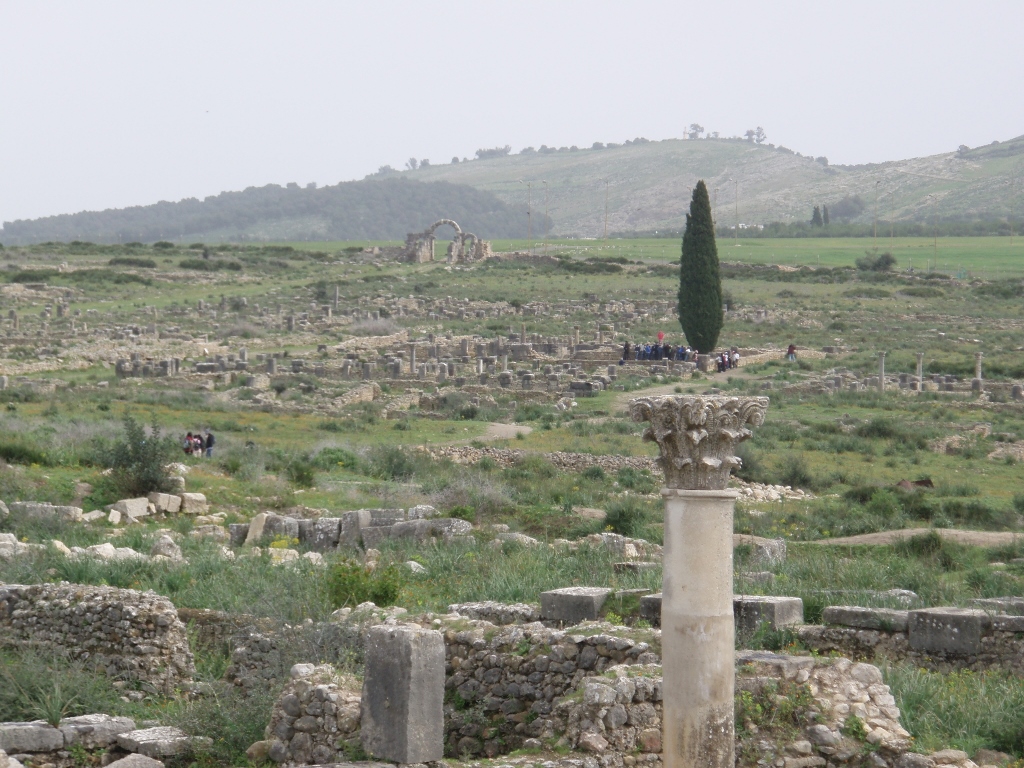 Volubilis, a detail
Volubilis, a detail
By the way, here you can see that there are large storks' nests on top of a few columns. This was just the beginning and by the end of my trip, I would be completely impressed by the large number of nests and storks I saw in Morocco. I assume they come here to spend the European winter.
But let me go back to the story about exploring the archaeological site of Volubilis. I now focused a bit more on the Basilica. It primarily served as a place for the city's administration and the administration of justice.
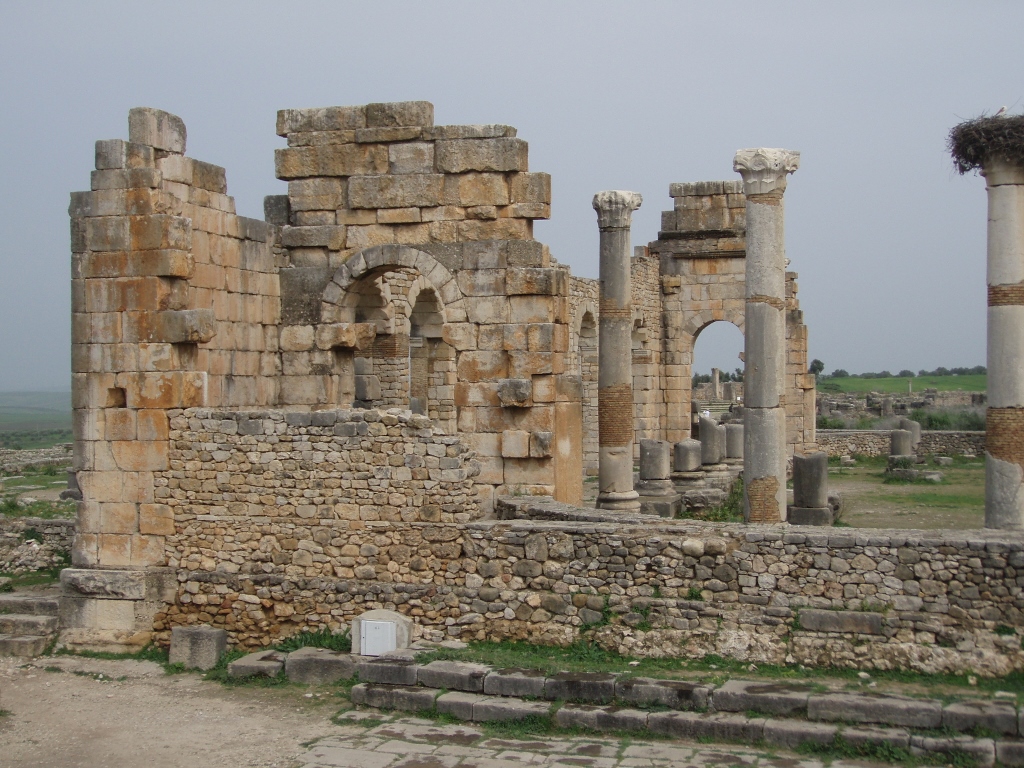 Volubilis, a detail
Volubilis, a detail
It is 42.2 m long and 22.3 m wide. It once had an upper floor as well.
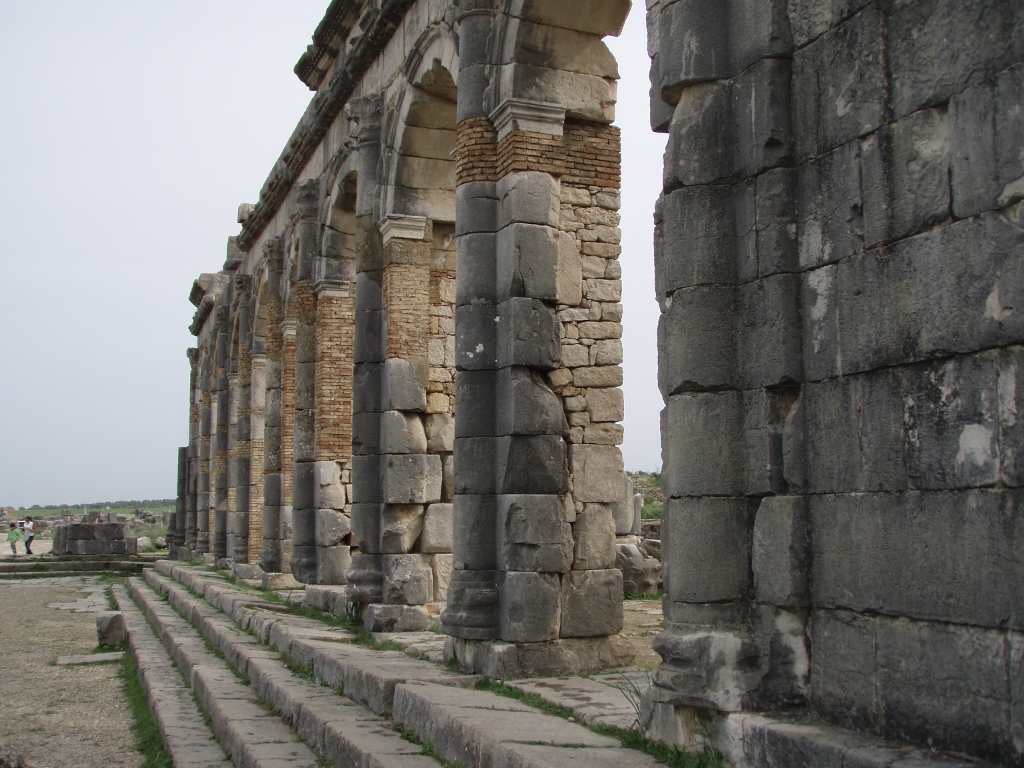 Volubilis, a detail
Volubilis, a detail
Inside, the remains of columns and capitals can be seen.
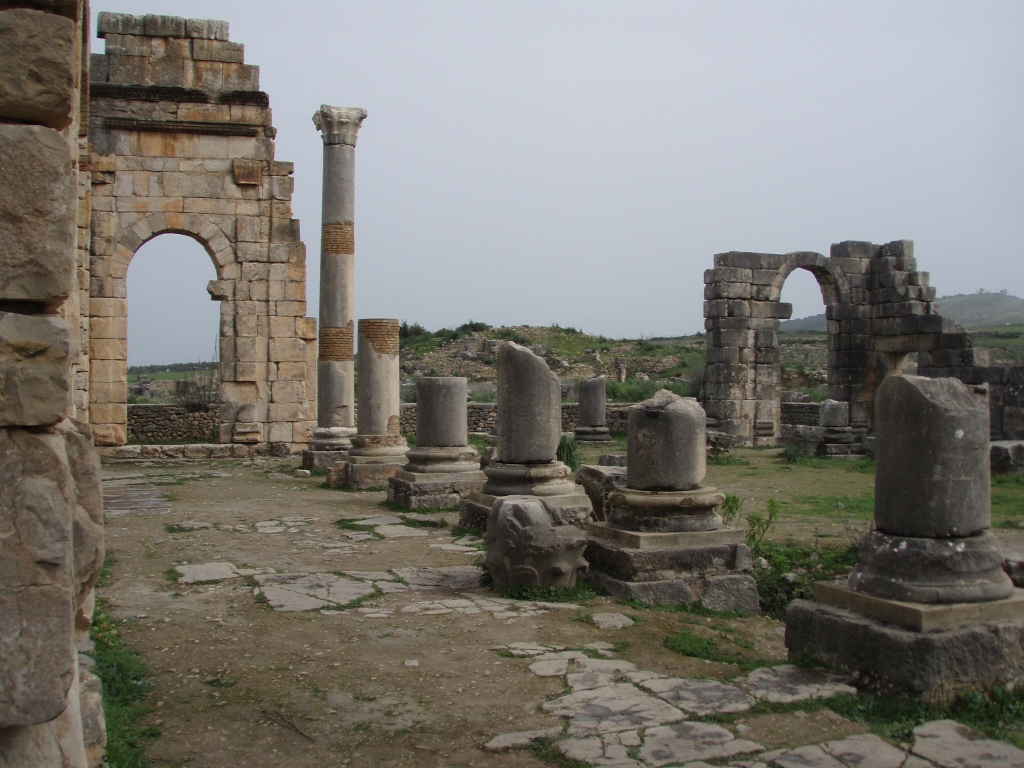 Volubilis, a detail
Volubilis, a detail
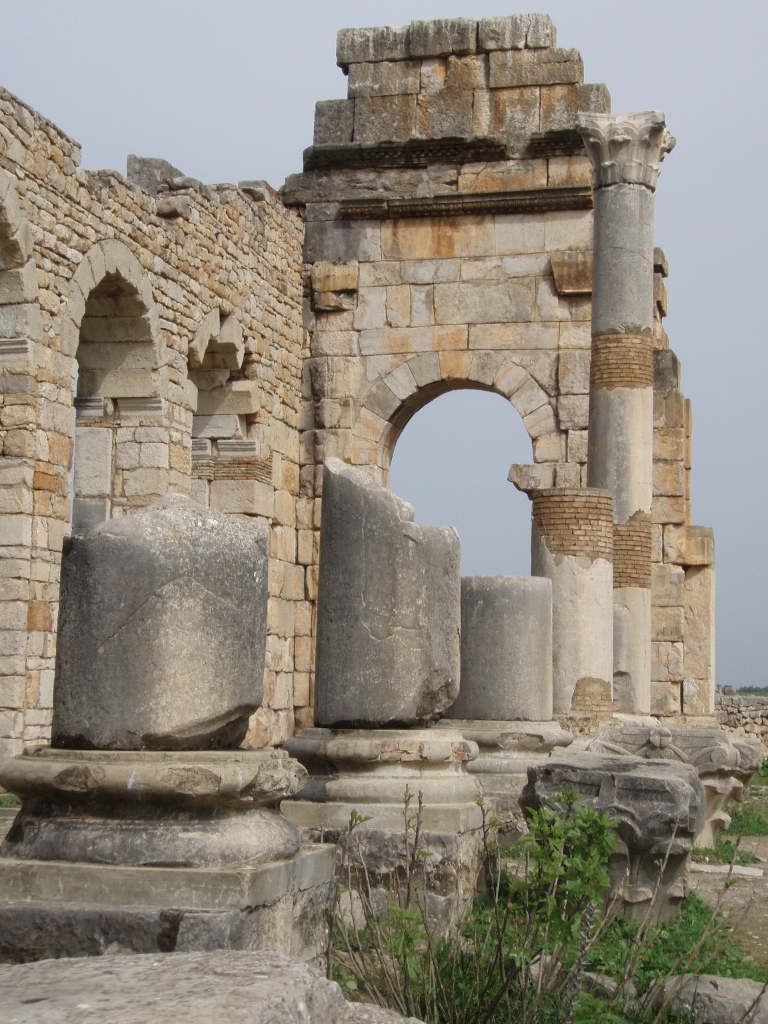 Volubilis, a detail
Volubilis, a detail
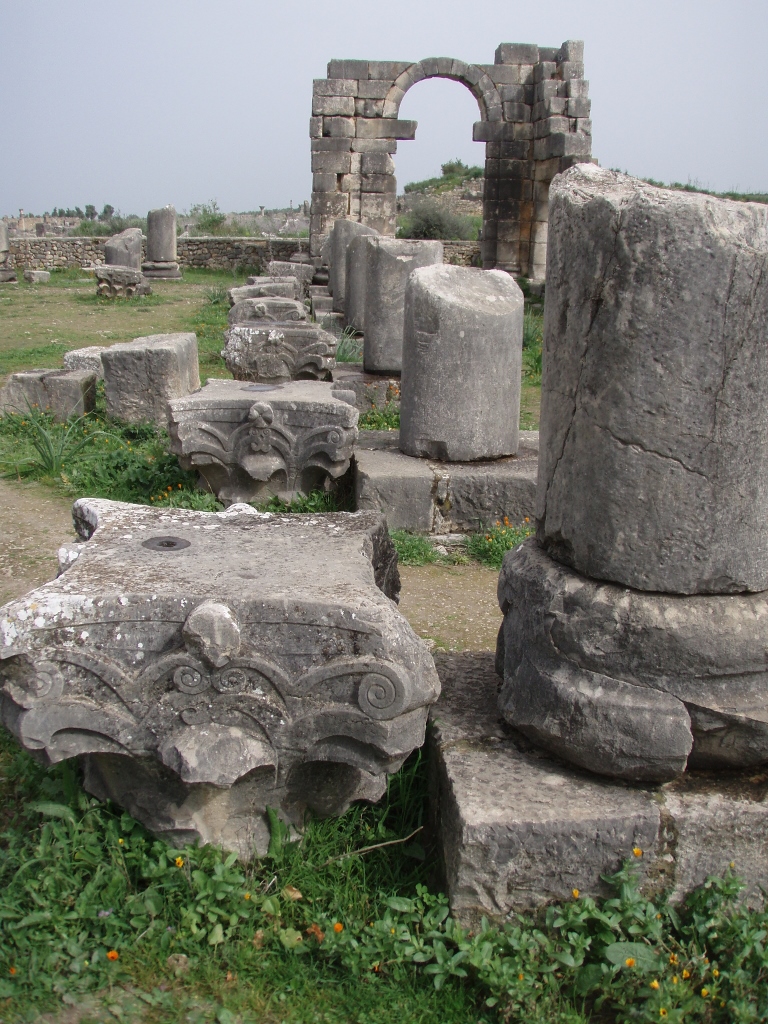 Volubilis, a detail
Volubilis, a detail
In front of the western wall of the Basilica, which is raised on several steps, lies the main square of the city, the Forum.
 Volubilis, a detail
Volubilis, a detail
In addition to being a place for trade, the forum, which covers an area of 1300 sq. m, was surrounded by smaller temples, as well as statues of Roman emperors and local officials. Today, however, only the pedestals of these statues can be seen.
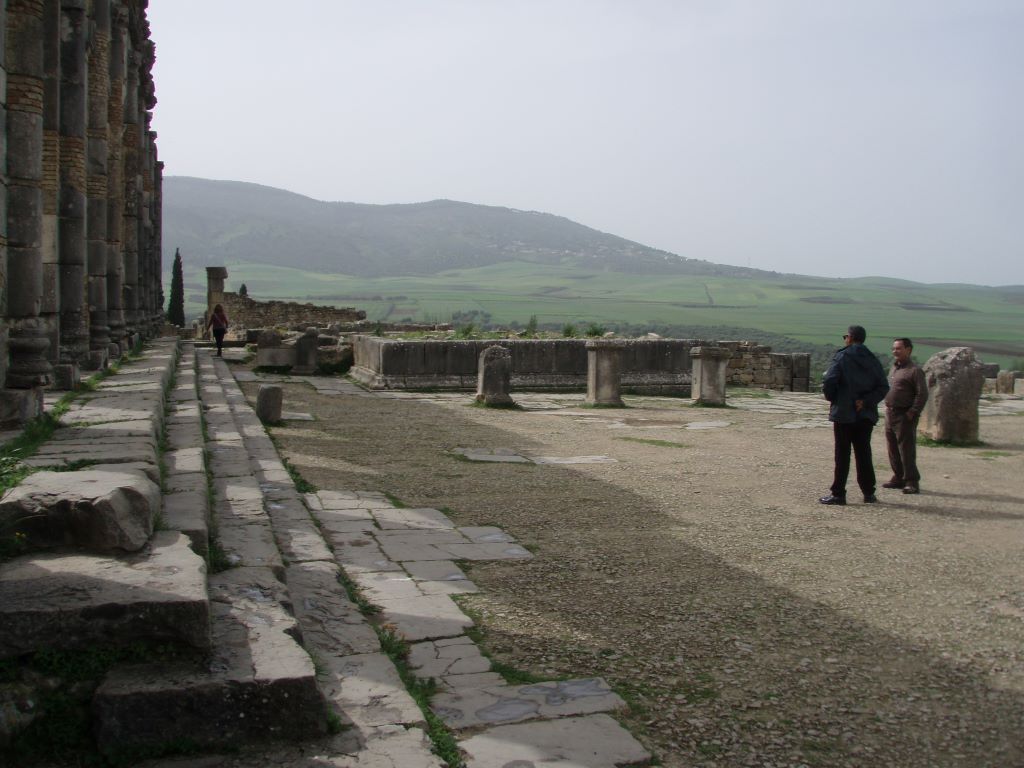
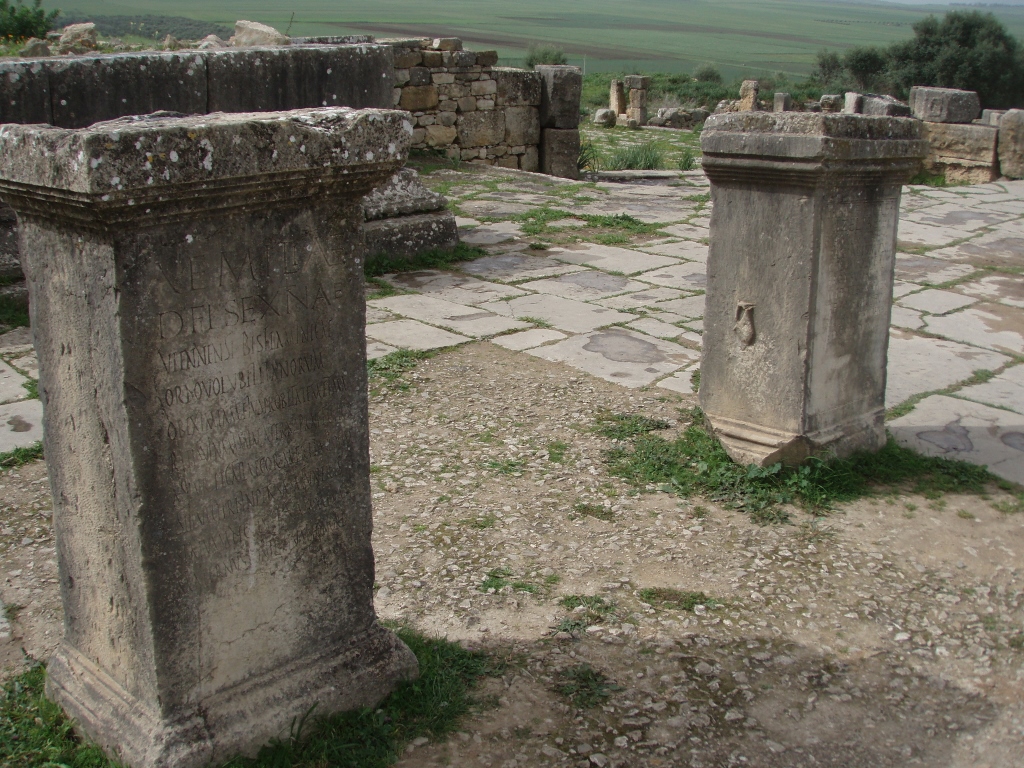 Volubilis, a detail
Volubilis, a detail
Continuing my tour, I came to the House of the Desultor, named after a mosaic that depicts a parody of sporting competitions – an athlete sitting on a donkey back to front, holding a trophy he won.
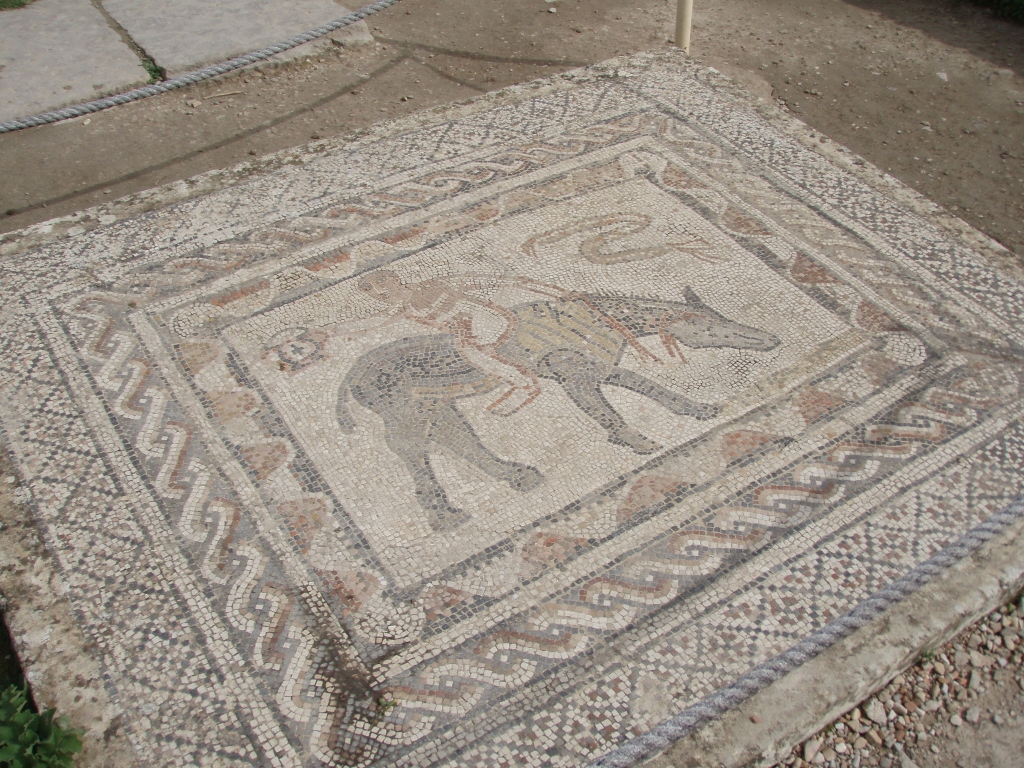 Volubilis, a detail
Volubilis, a detail
Then I passed by the remains of a public fountain, but the most significant structure in that part of the site is the Triumphal Arch or the Arch of Caracalla. The second name comes from the fact that the arch is dedicated to Emperor Caracalla and his mother.
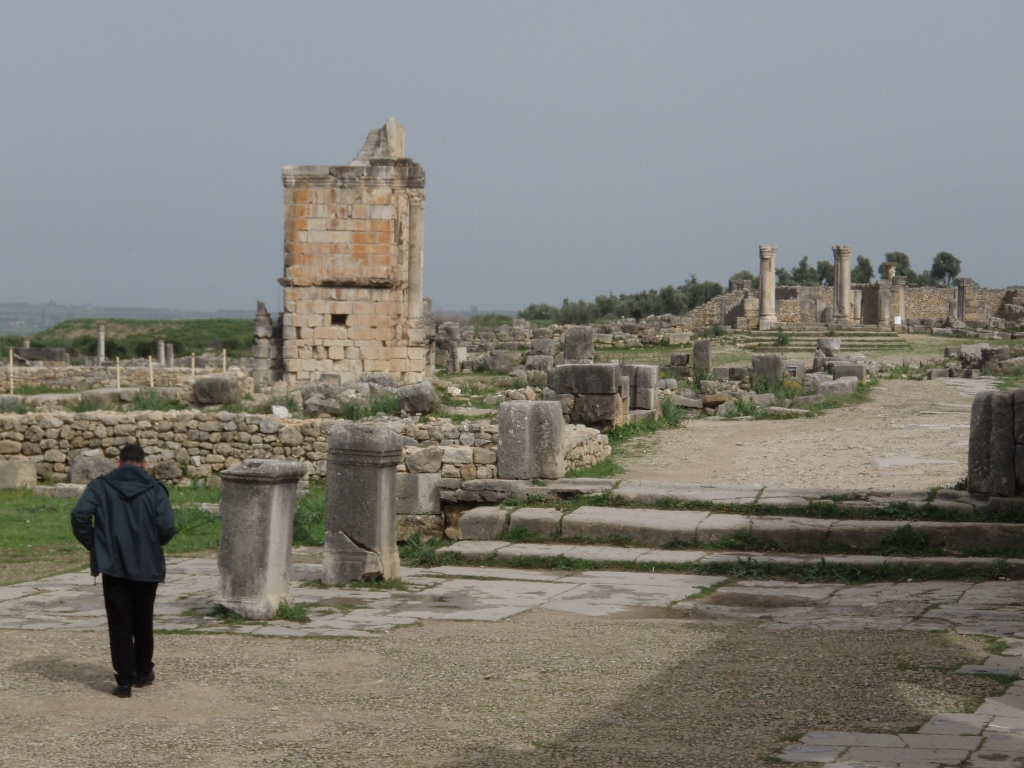 Volubilis, a detail
Volubilis, a detail
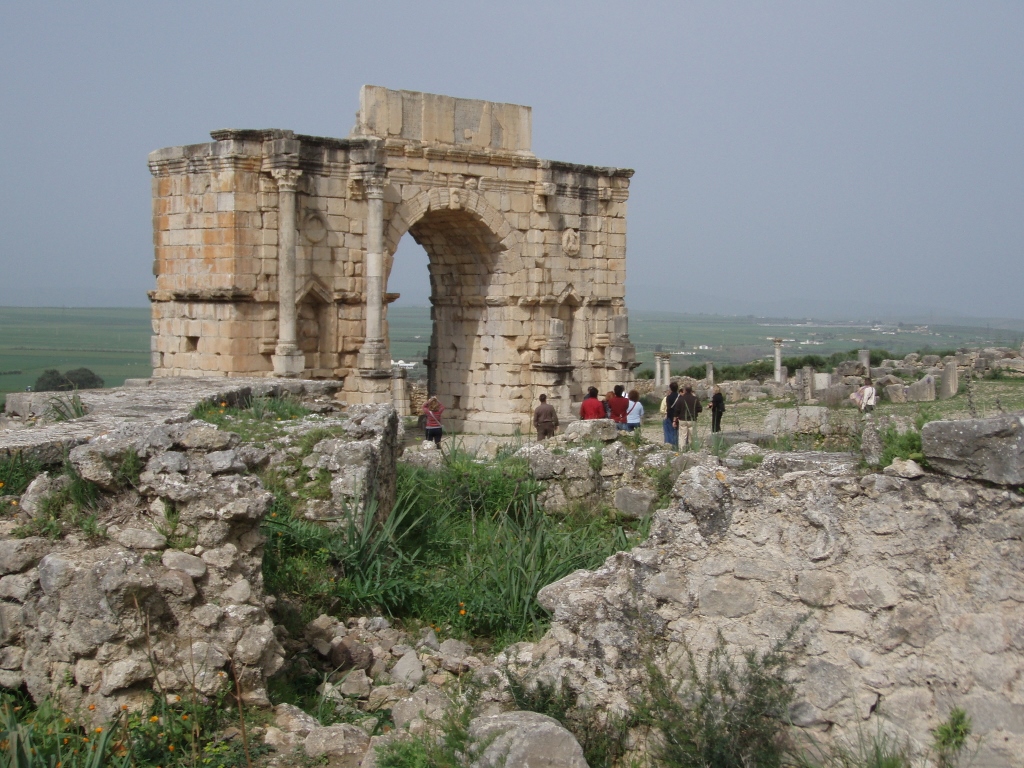 Volubilis, a detail
Volubilis, a detail
The arch was erected in 217 CE and bronze chariots once stood at its top. Over time, the arch deteriorated significantly, but it was restored in the first half of the 20th century. I found it interesting to read that some mistakes were made during the restoration, but these were corrected in the 1960s.
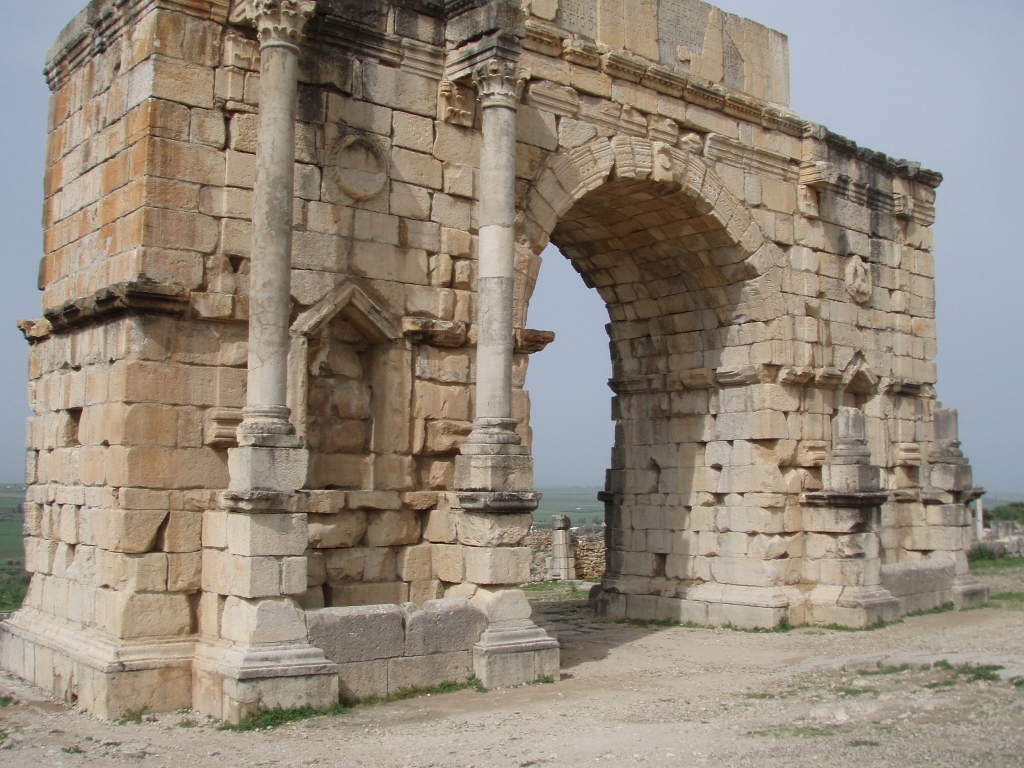 Volubilis, a detail
Volubilis, a detail
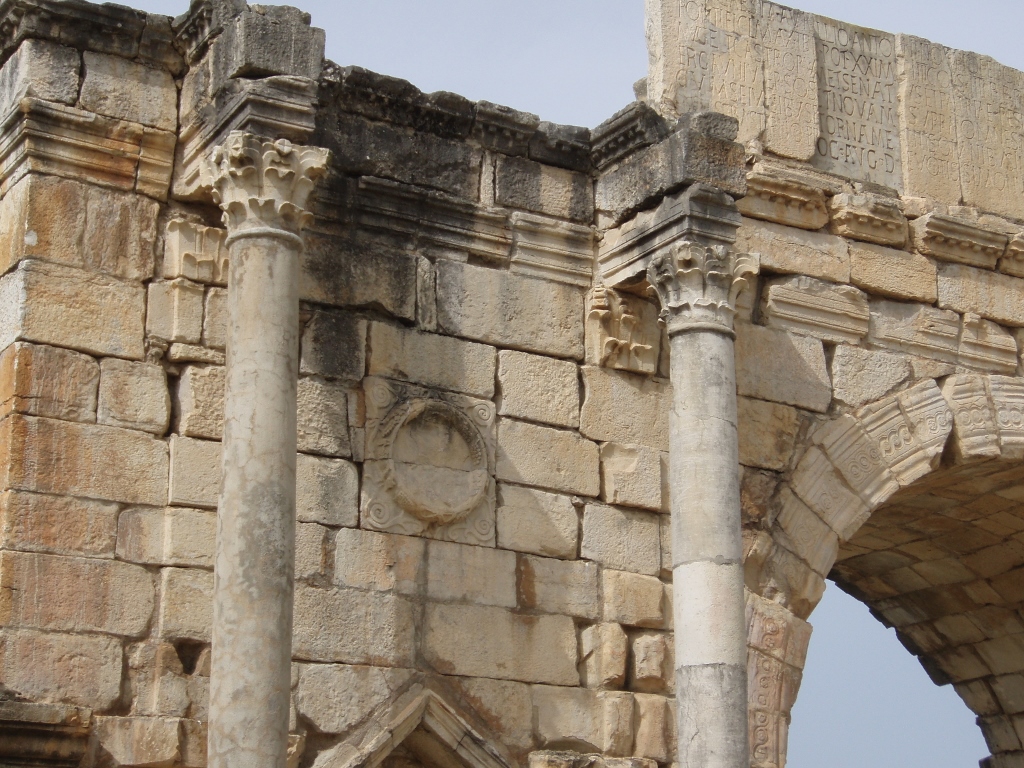 Volubilis, a detail
Volubilis, a detail
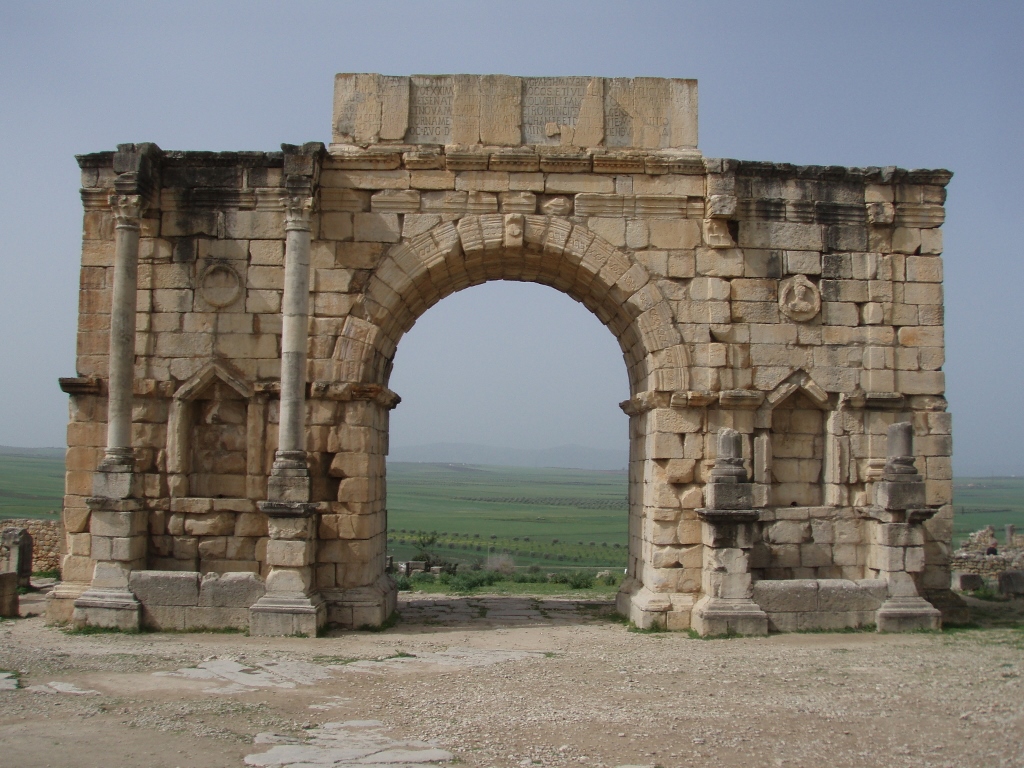 Volubilis, a detail
Volubilis, a detail
Practically starting from the Triumphal Arch, there is a whole series of houses with impressive mosaics. The first is the House of the Ephebe, but I wasn't able to see the mosaic there very clearly.

So, I continued on to the next house, the House of the Columns. Although it didn't have mosaics, it certainly had beautiful columns, as the name suggests. What is particularly interesting is that the columns were made in different styles.
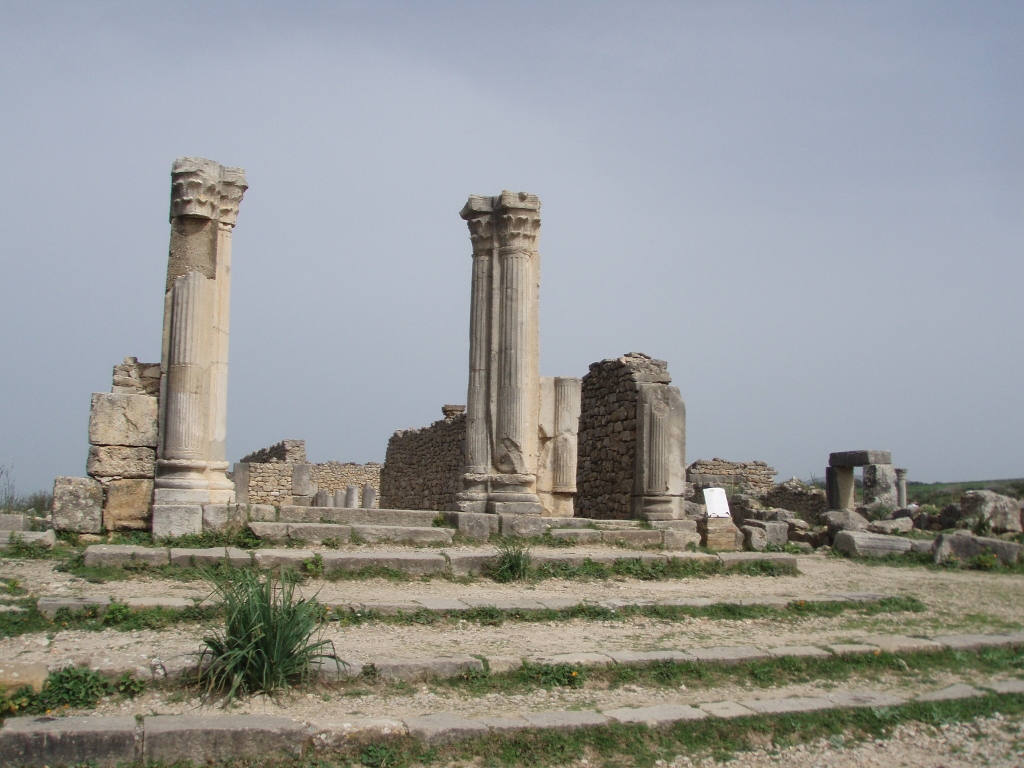 Volubilis, a detail
Volubilis, a detail
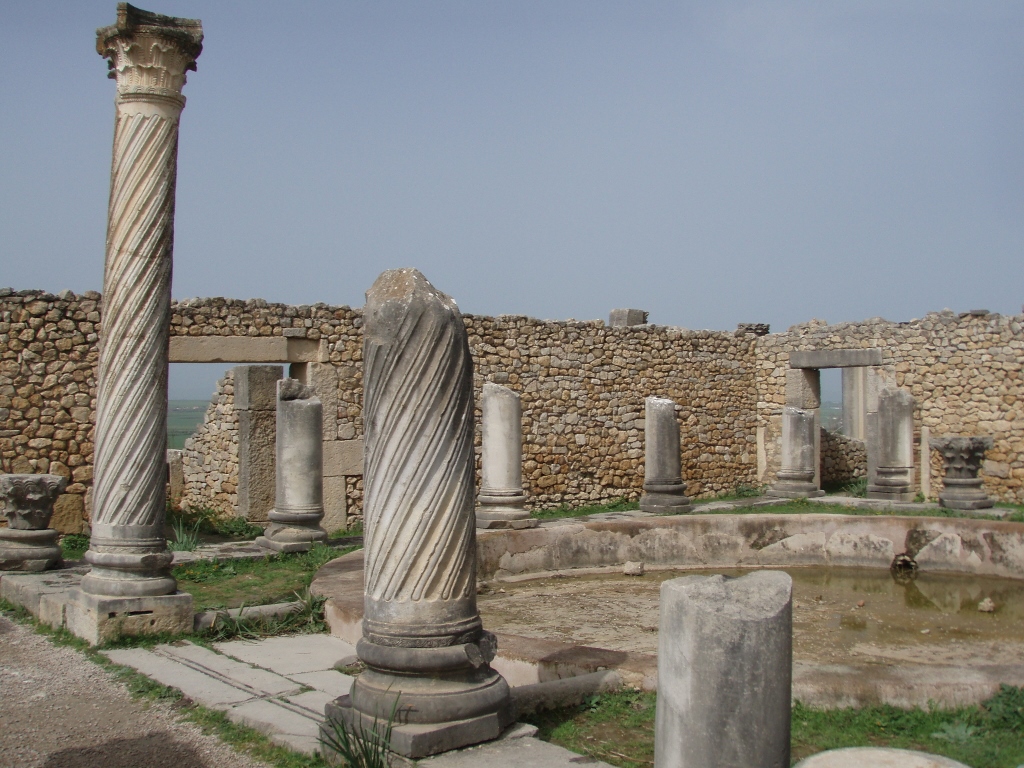 Volubilis, a detail
Volubilis, a detail
The next is the House of the Knight, which features a very beautiful mosaic of Bacchus and Ariadne.
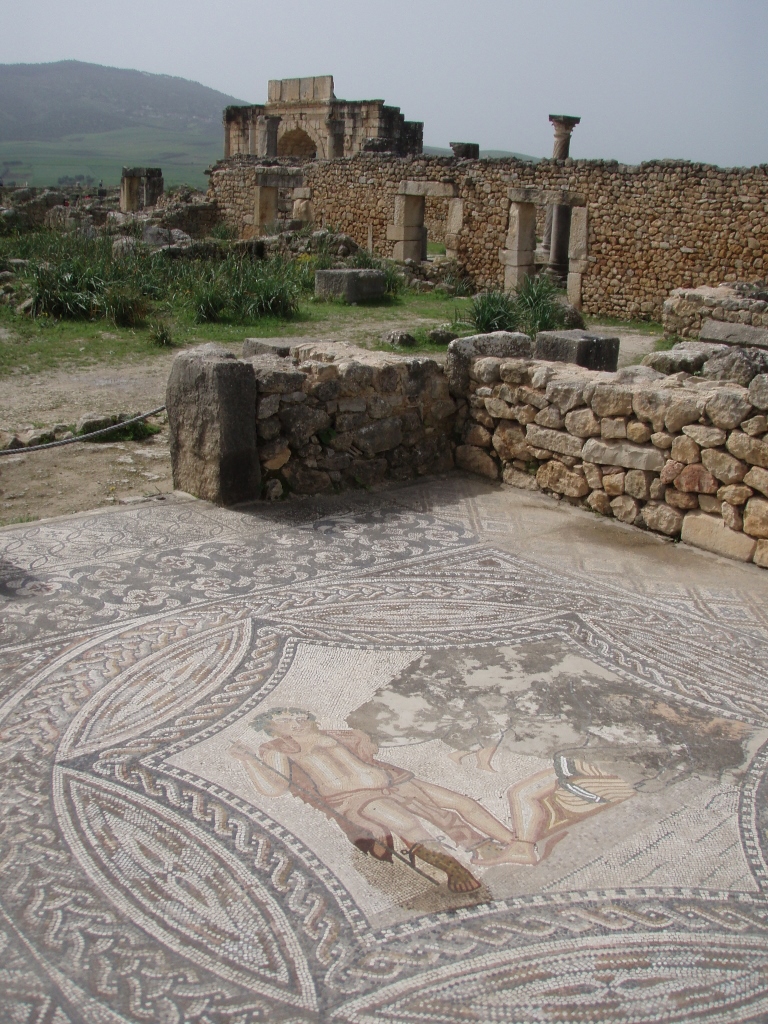 Volubilis, a detail
Volubilis, a detail
In continuation there are the remains of the House of the Labours of Hercules that was actually a true palace, with 41 rooms and an area of 2,000 sq. m. Various interesting details and beautiful mosaics can be seen here.
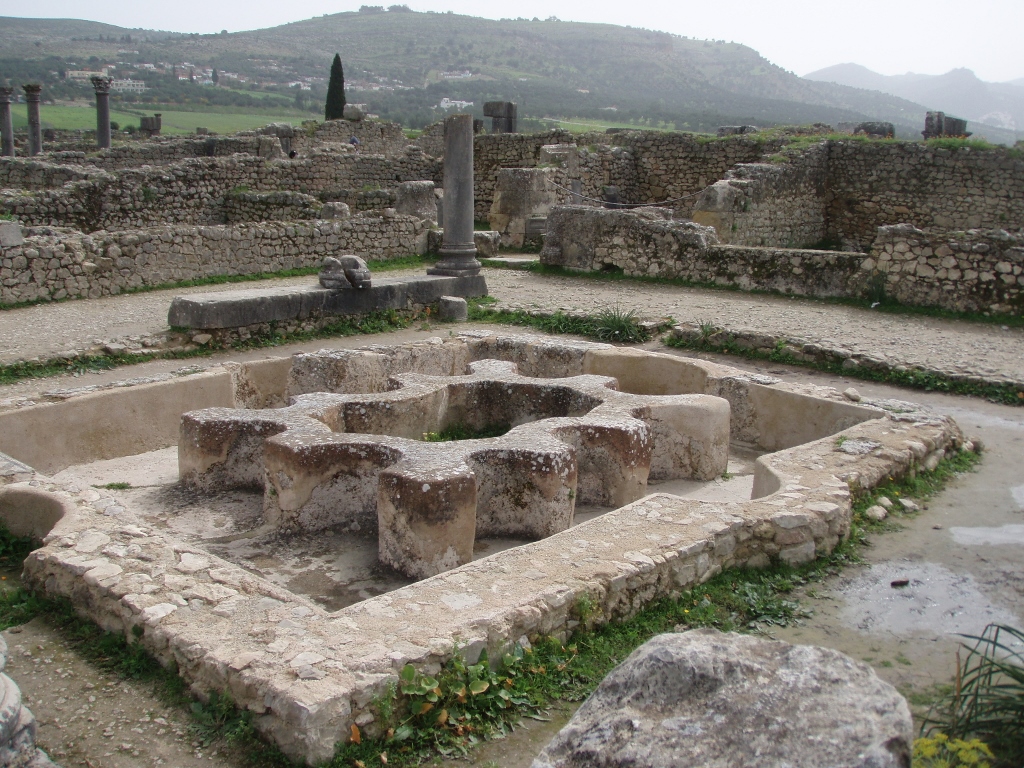 Volubilis, a detail
Volubilis, a detail
 Volubilis, a detail
Volubilis, a detail
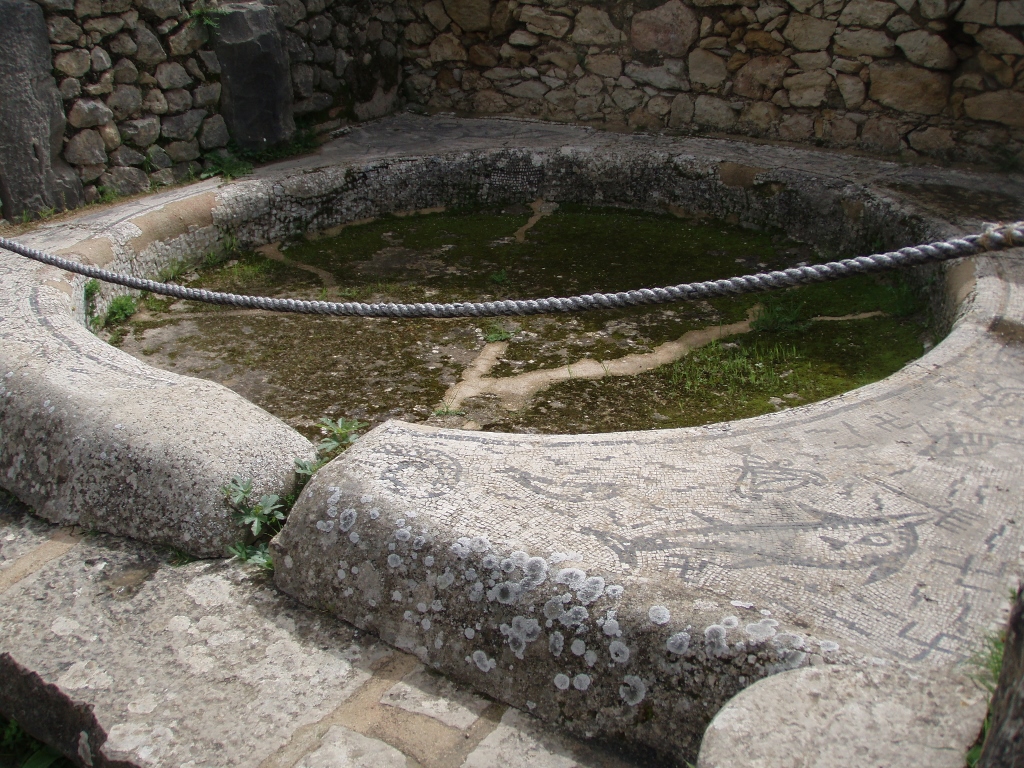 Volubilis, a detail
Volubilis, a detail
However, it is the most beautiful mosaic that gives this house its name, as it depicts the 12 Labours of Hercules. It is believed to have been created in the second half of the 2nd century CE.
 Volubilis, a detail
Volubilis, a detail
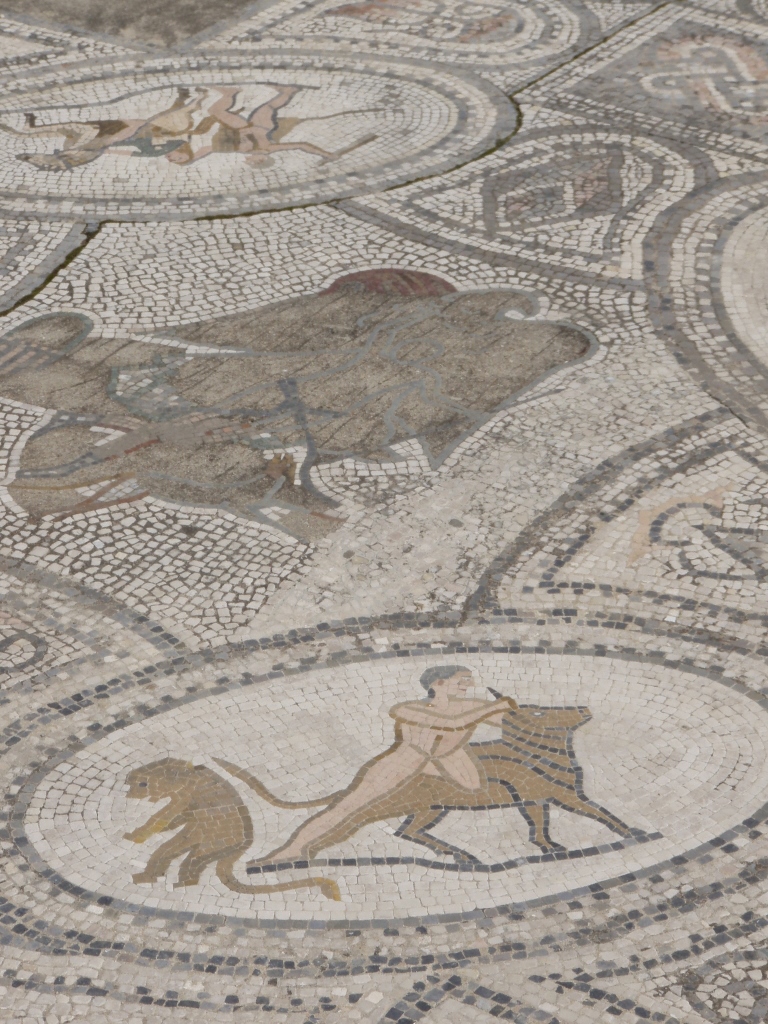 Volubilis, a detail
Volubilis, a detail
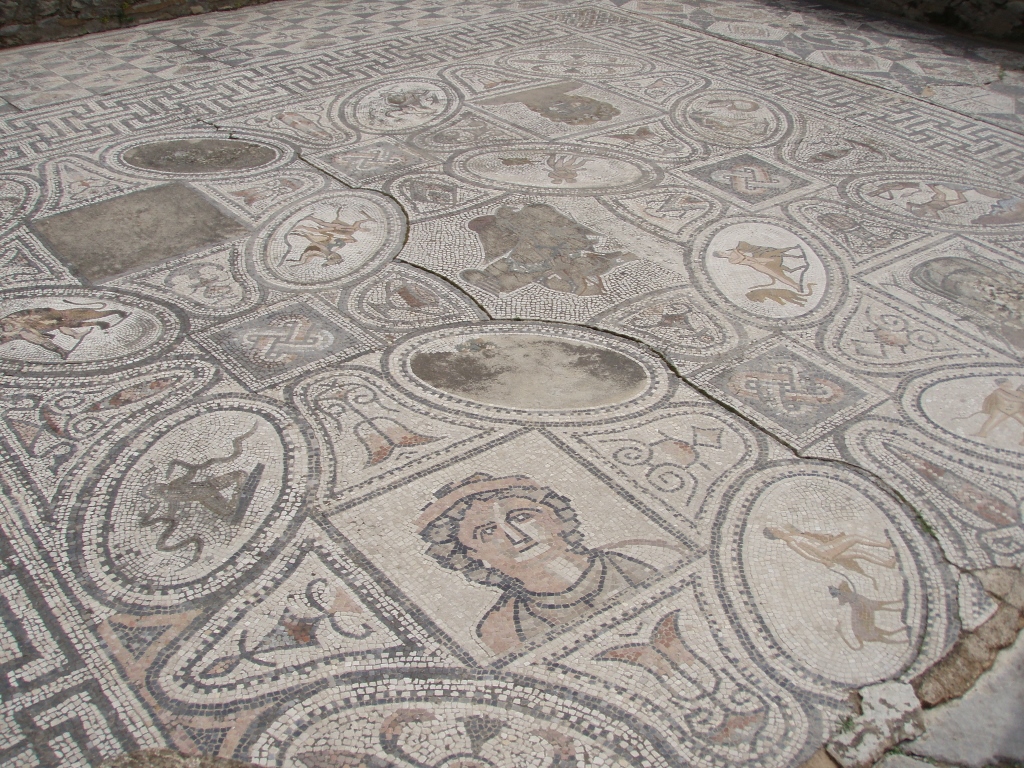 Volubilis, a detail
Volubilis, a detail
All of these houses I’ve just mentioned were built along the city’s main street, the Decumanus Maximus.
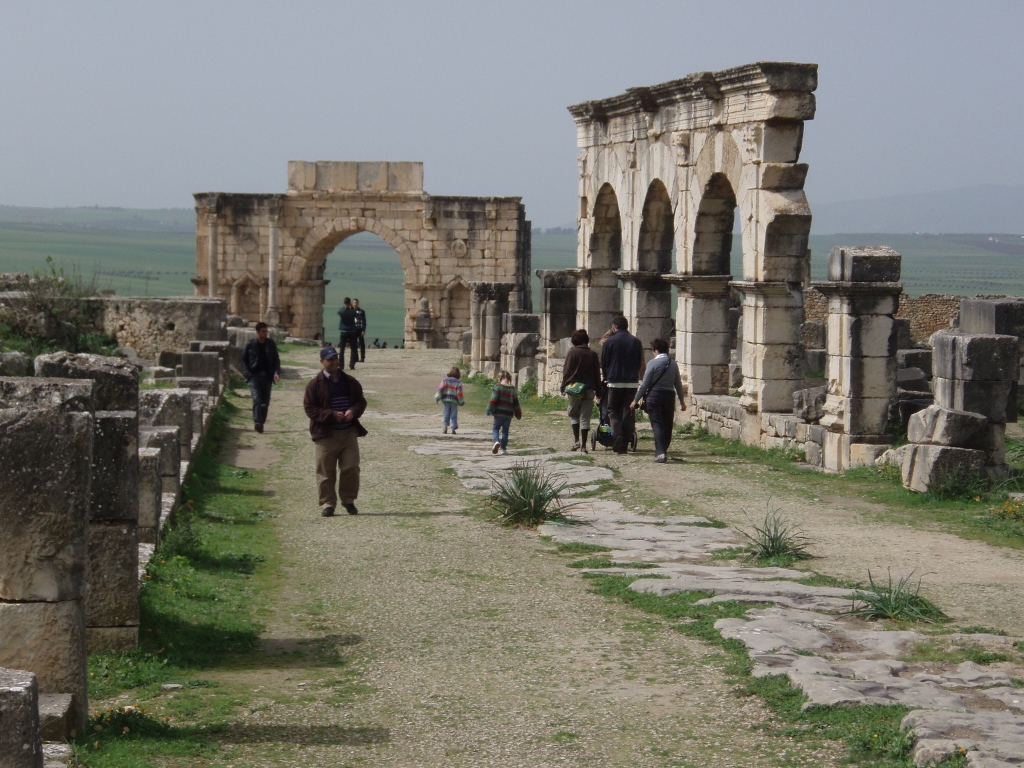 Volubilis, a detail
Volubilis, a detail
At the end of the Decumanus Maximus lie the remains of the North Tower, also known as the Tangier Gate, but I didn’t photograph them later on, so they appear in my collection only in the next photo.
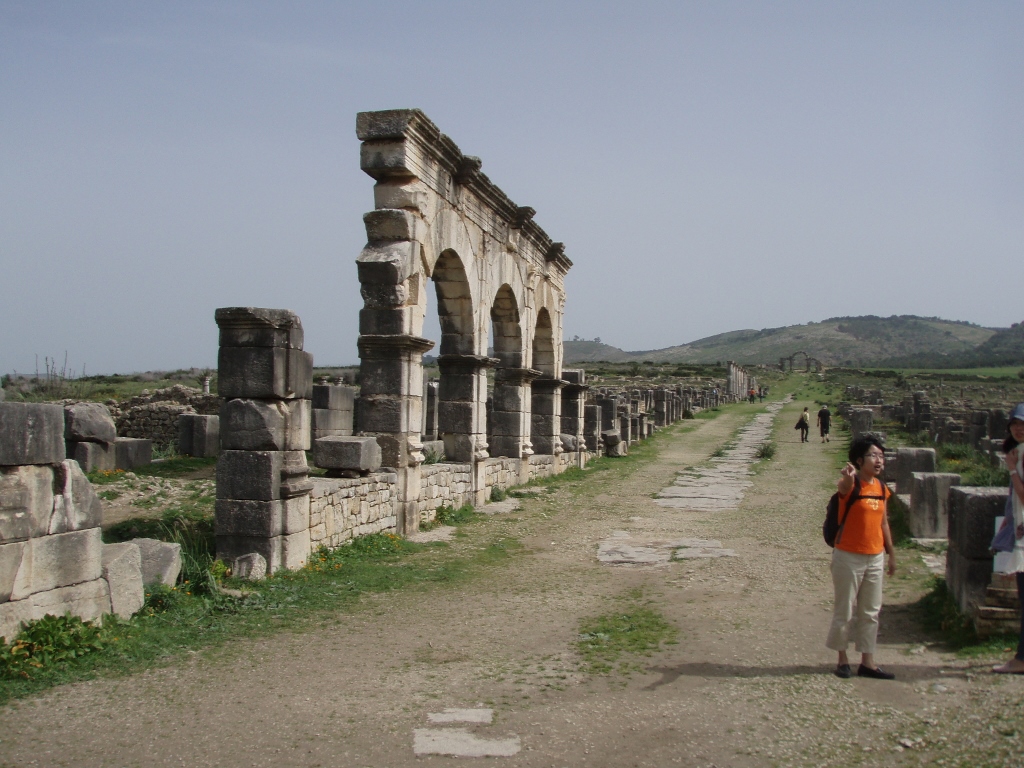 Volubilis, a detail
Volubilis, a detail
On the left side of the main street are the remains of the Gordian Palace, which is the largest structure in Volubilis. Aside from a few beautiful columns, however, there aren’t many notable details. In any case, I continued walking along the street a bit more and as far as I can see on today's maps, several more houses, or rather, their remains, are marked on the left-hand side. But back in 2010, during my visit to the site, my guidebook didn’t highlight any of them in particular. Instead, it directed me to the House of Venus, located on the right-hand side, but in the next block of houses.
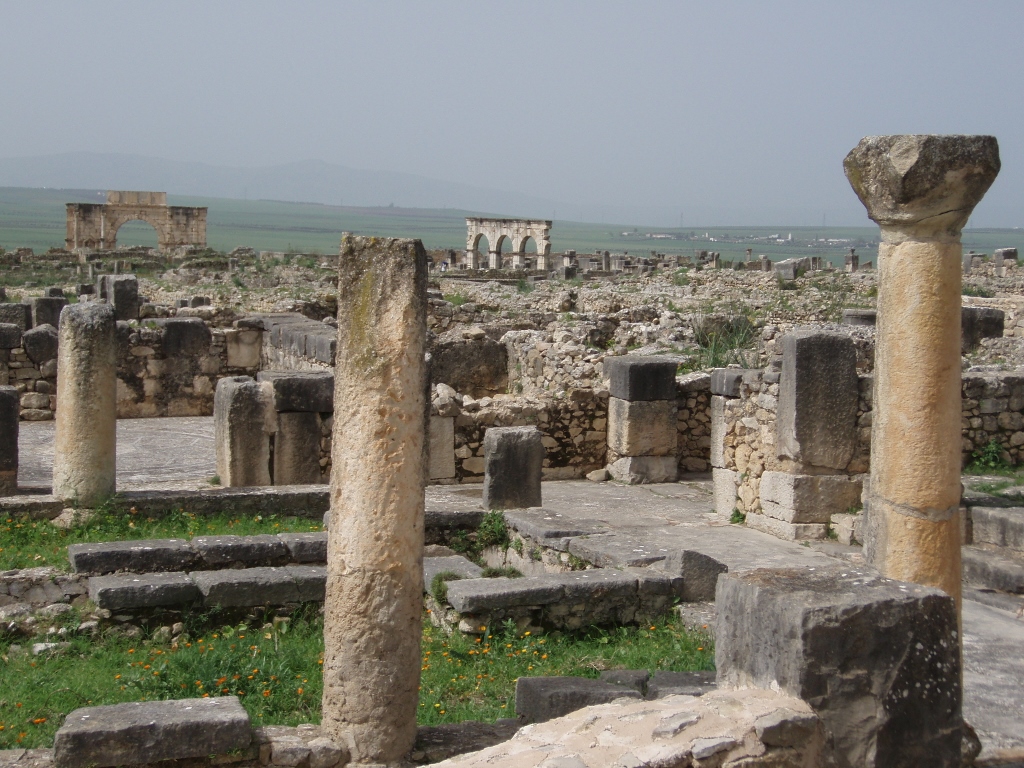 Volubilis, a detail
Volubilis, a detail
When you reach the House of Venus, it’s clear that it was a classically built villa – there’s an entrance with a few steps leading to an atrium, around which runs a corridor providing access to various rooms. This layout can’t really be seen in my photos, but it becomes quite obvious when you’re at the site.
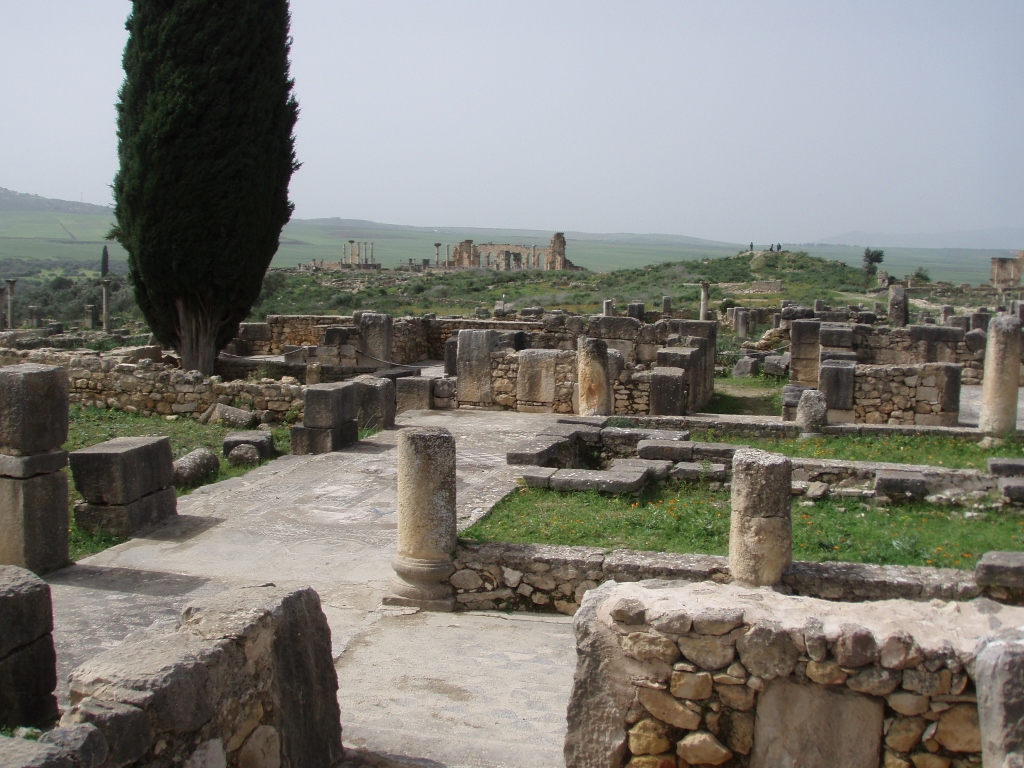 Volubilis, a detail
Volubilis, a detail
It is believed that the best collection of mosaics is found in this house and they were created in the 2nd century CE. By the way, the mosaic depicting Venus, after which the house is named, was transferred to Tangier. However, there are still many other beautiful floor decorations here. Some of them are created using non-figurative ornamentation, but there are also two outstanding mosaics in the form of images – The Abduction of Hylas by the Nymphs and Diana Bathing, which are located on the floors of two neighbouring rooms.
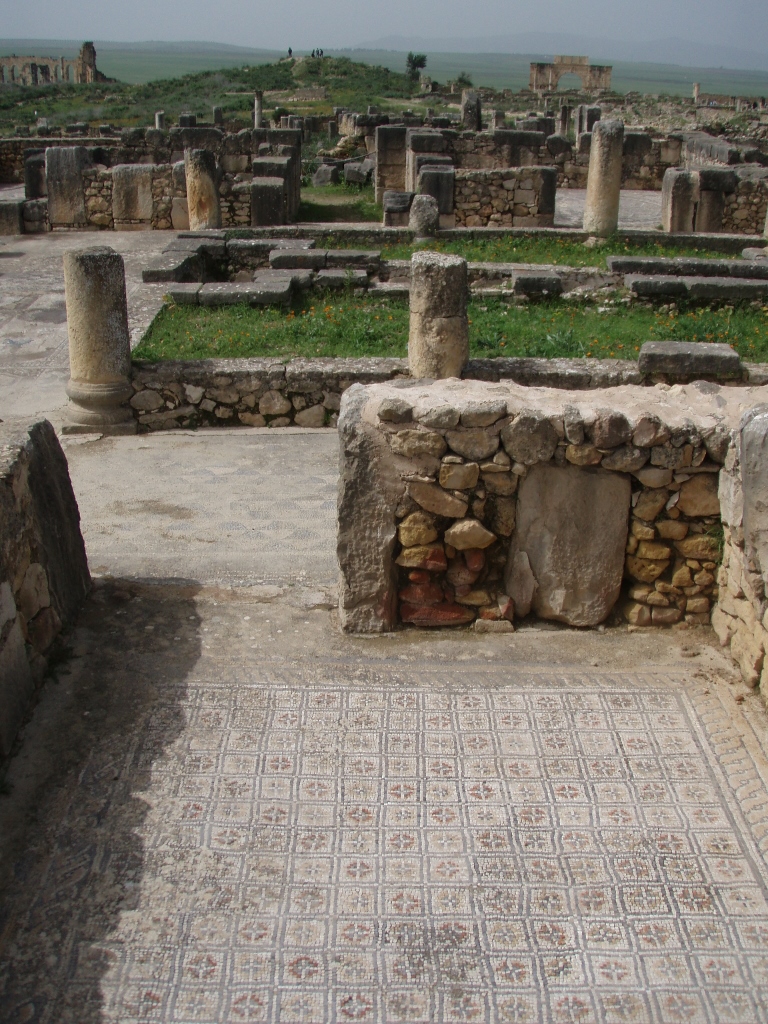 Volubilis, a detail
Volubilis, a detail
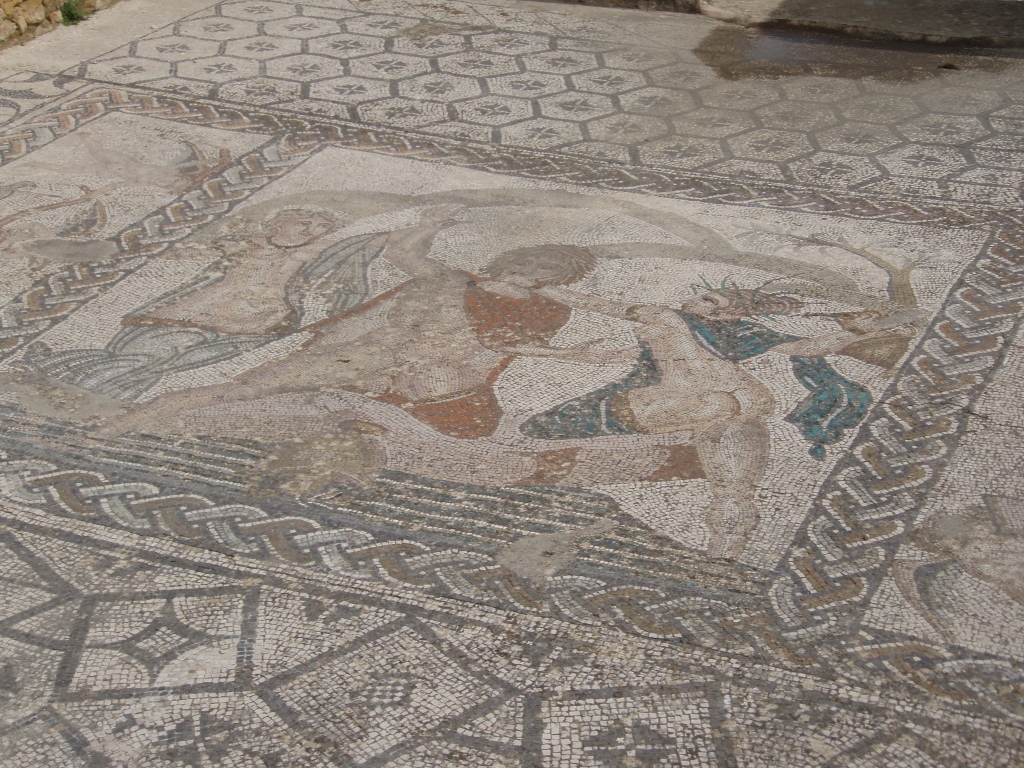 Volubilis, a detail
Volubilis, a detail
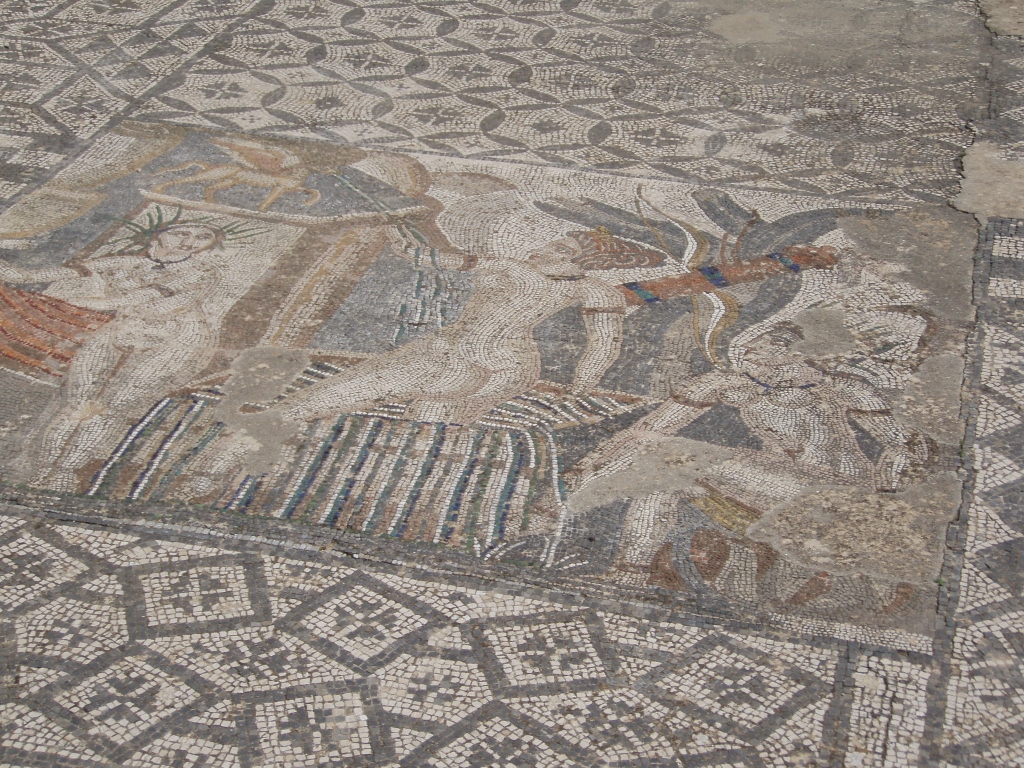 Volubilis, a detail
Volubilis, a detail
I walked around the site a bit more and then I started heading towards the exit with the intention of finding my way back to Meknes.
The return trip, in theory, was much more complicated. I would have to walk to Moulay Idriss, which is almost 5 km away from here, mostly uphill, and then catch a "big taxi," meaning a shared taxi. I wasn’t too thrilled with this idea, but it seemed better to start walking than to just stand around at the site’s parking lot. After walking for a few hundred metres, however, a tourist coach started approaching me and I decided to hitch a ride. It did stop and to cut a long story short, I ended up riding directly to Meknes with a group of French tourists. I thanked them profusely, waved goodbye to them and they back to me, and it was a moment of shared happiness.